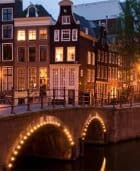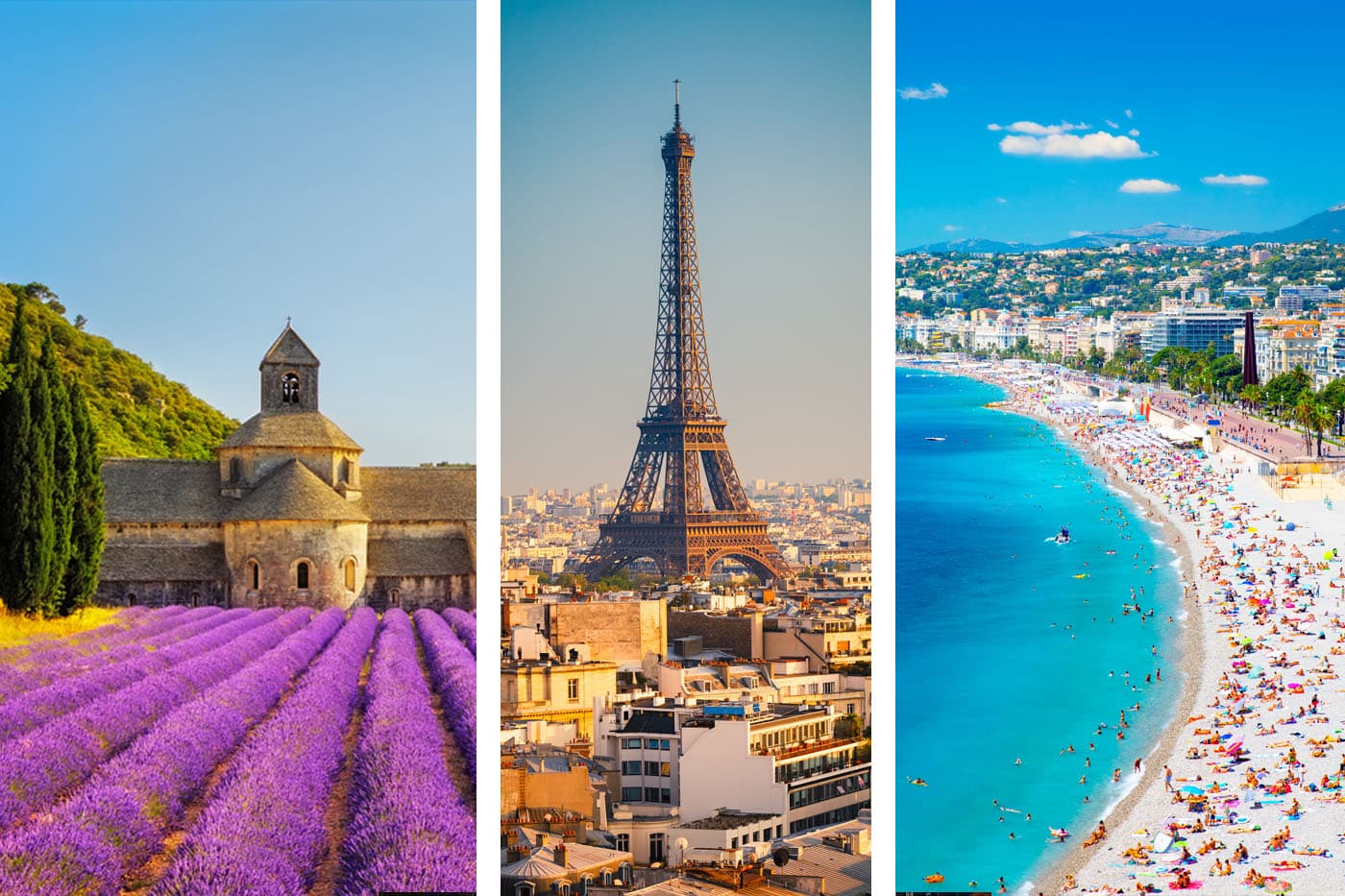
There is a reason France is the most popular destination in Europe — it has so many amazing cities and distinct regions that it’s hard to choose where to visit. That’s why I’ve gathered what I think are the best places to visit in France so you can better plan your next trip.
Paris
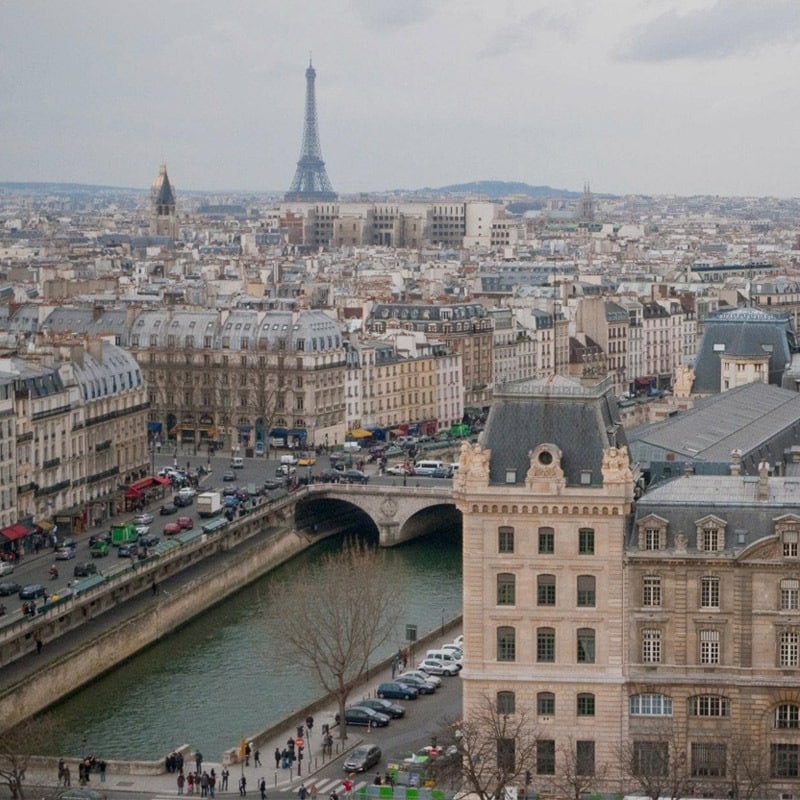
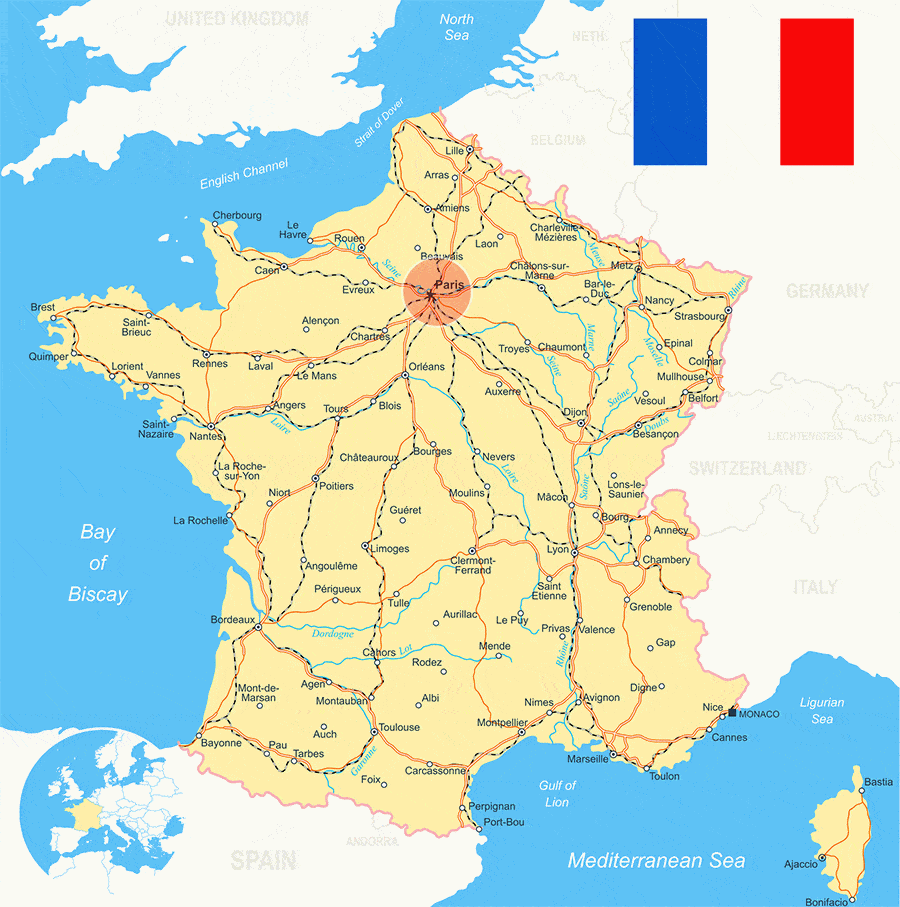
Let’s start off our list of the best places to visit in France with the no-brainer — Paris. Simply put, Paris is one of my favorite places in France and I believe everyone needs to spend time here.
Paris is a powerhouse of a city. From great food and museums to shopping and architectural beauty, Paris truly has it all. The city offers so much to see/do/eat that the most difficult part of visiting Paris is choosing how to spend your time. Here’s my tip… slow down. Give yourself time to actually enjoy it. Most people who hate Paris are the people who tried to “do it all” in a few days.
Why Paris Is One Of The Best Places in France
Where to start? I mean, come on, it’s Paris. Check out my Paris Travel Guide and my guide to the Best Things To Do in Paris for a more in-depth look but below are some of my favorite things about Paris.
- Seeing the impressive collection of impressionist paintings from Renoir, Monet, and van Gogh at the Musee d’Orsay.
- Indulging in Paris’ famous sidewalk cafe culture.
- Exploring the lovely Montmartre neighborhood and looking down over Paris from the Sacré-Cœur.
- Slowly and aimlessly strolling the streets and picking up something sweet from a bakery window.
- Spending a relaxing time in one of the city’s many royal gardens and parks.
- Eating all the croissants, baguettes, macarons, ice cream, and anything else that catches your eye.
- The Louvre, Eiffel Tower, Champs-Élysées, and all the other totally cliche yet must-see attractions.
Nice & The French Riviera (Côte d’Azur)
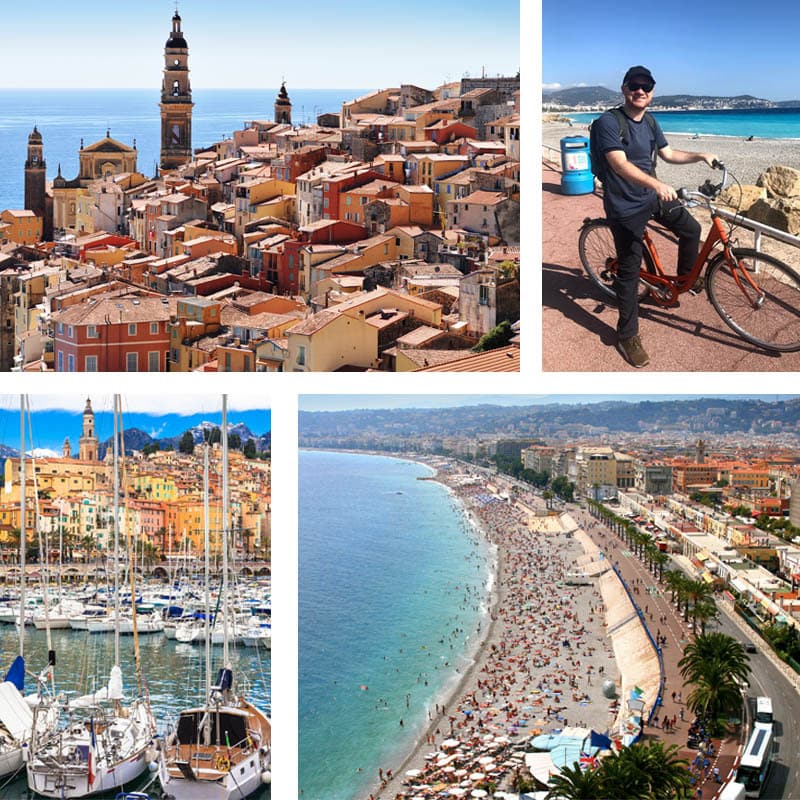
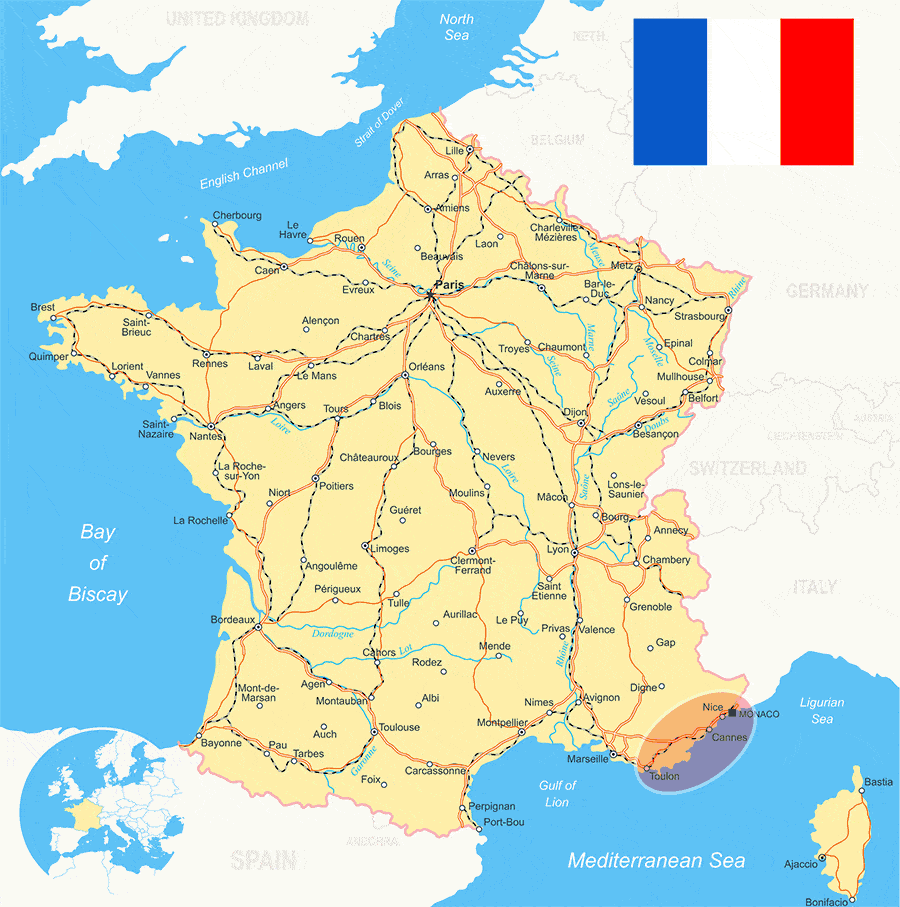
Nicknamed “Nice the Beautiful,” the southern French city of Nice and its smaller surrounding towns of the French Rivera (Côte d’Azur) offer sun-drenched Mediterranean beauty all year.
Nice is one of France’s most popular cities for both French and foreign visitors thanks to its old-world charm, winding side streets lined with inviting cafes, local flavor, laid-back seaside vibe, regional cuisine, and its long (pebble) beach.
Nice also makes an excellent home base for exploring the surrounding small seaside towns and villages of the French Rivera (Côte d’Azur) — which are all connected via train or bus.
Why Nice and the French Rivera is One Of The Best Places in France
Here are a few of the highlights of Nice, France and the French Rivera. If you want a more in-depth look, check out my guide to the Best Things to Do in Nice, France.
- Nice’s Historic Old Town (Vieux Nice): Nice’s 16th century Old Town (Vieux Nice) is the ultra-cute and largely pedestrian-only part of town that’s packed full of restaurants, bars, cafes, markets, winding streets, etc.
- Promenade des Anglais and the Beach: The Promenade des Anglais is a long pedestrian promenade that runs the length of Nice’s white pebble beach. Speaking of the beach, bring sandals because the pebbles aren’t comfortable to walk on.
- Cours Saleya Market: This farmers’ market has all kinds of prepared food, fresh produce, and lovely flowers.
- Chagall and Matisse Museums: These two wonderful museums are worth checking out.
- Coastal Walk: There is a well-established coastal walk that goes from Nice to Villefranche which takes around two hours (you can take the train back).
- Explore Other Towns In The French Rivera: East of Nice you’ll find Villefranche-sur-Mer, St. Jean Cap Ferrat, Eze-le-Village, Monaco, and Menton. West of Nice there’s Antibes and Cannes. There are a few other small towns but these are the most popular destinations. The train ride between each of these towns is only about 10 minutes.
Bordeaux
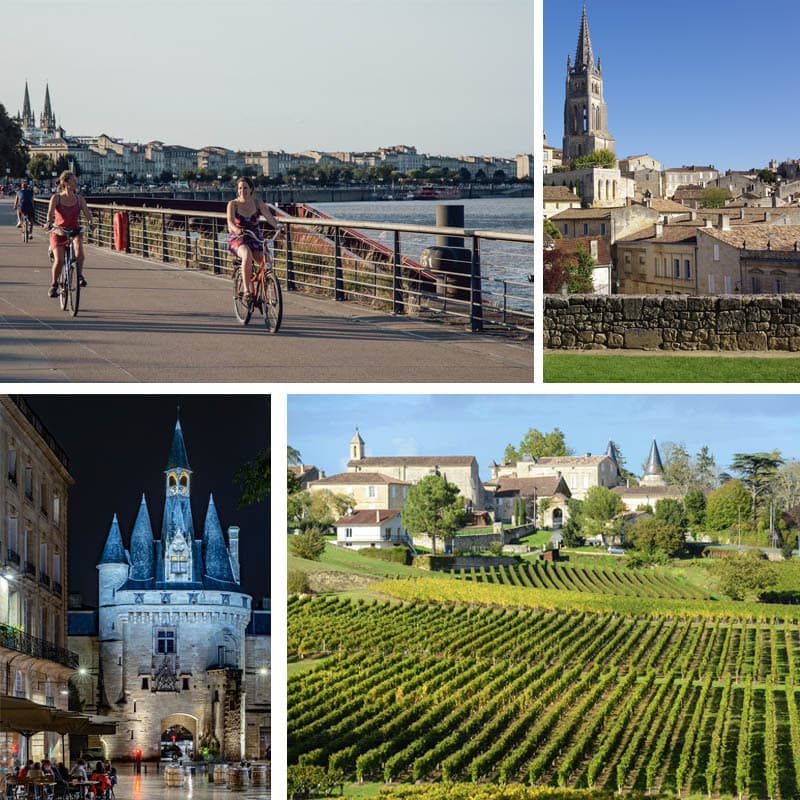
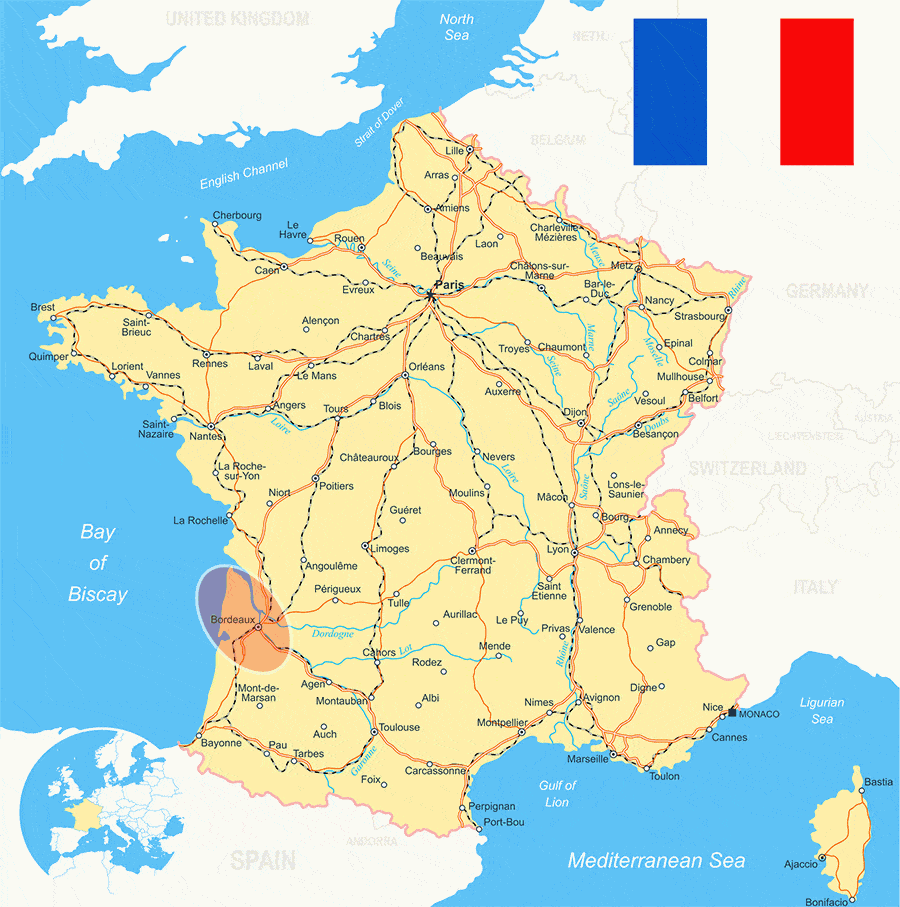
Situated near the Atlantic coast in the southwest of France, the city of Bordeaux at the heart of France’s most famous wine country — the region boasts over 7000 winemakers.
Why Bordeaux Is One Of The Best Places in France
- Wine and Vineyards: Bordeaux is known for its excellent wine and much of France’s most expensive and world-famous wines from this region — there are also plenty of affordable and excellent wines as well. You can explore various vineyards on your own via bike/car, or with a group tour.
- Great Food: You’ll find plenty of great food to go along with your great wine in Bordeaux — especially fresh seafood (60% of the oysters eaten in France come from the region).
- Excellent Day Trip Options: The Medieval town of Saint Emilion, Carcassonne, Limoges, Libourne, and the Dune du Pilat (Europe’s largest sand dune) are just a few of the nearby day-trip options.
- Quick Train to Paris: The high-speed train between Paris and Bordeaux only takes two hours so it’s also an easy day trip from Paris.
- La Cité du Vin: Learn more about wine at the interactive Wine Museum.
- Architecture: Bordeach has plenty of charming buildings — including the 11th century Cathedrale Saint-Andre and Place de la Bourse.
Lyon
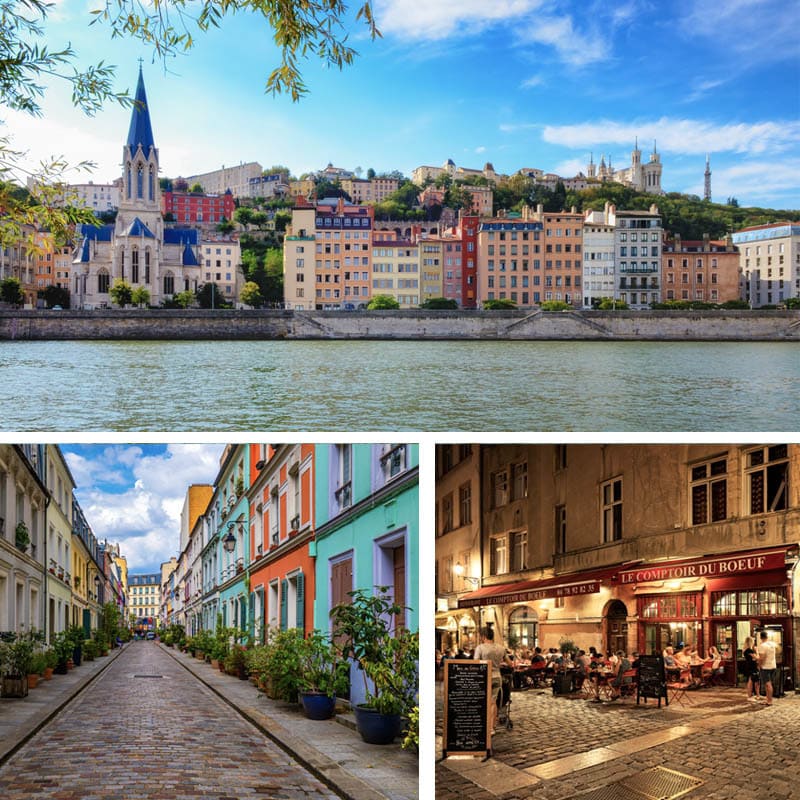
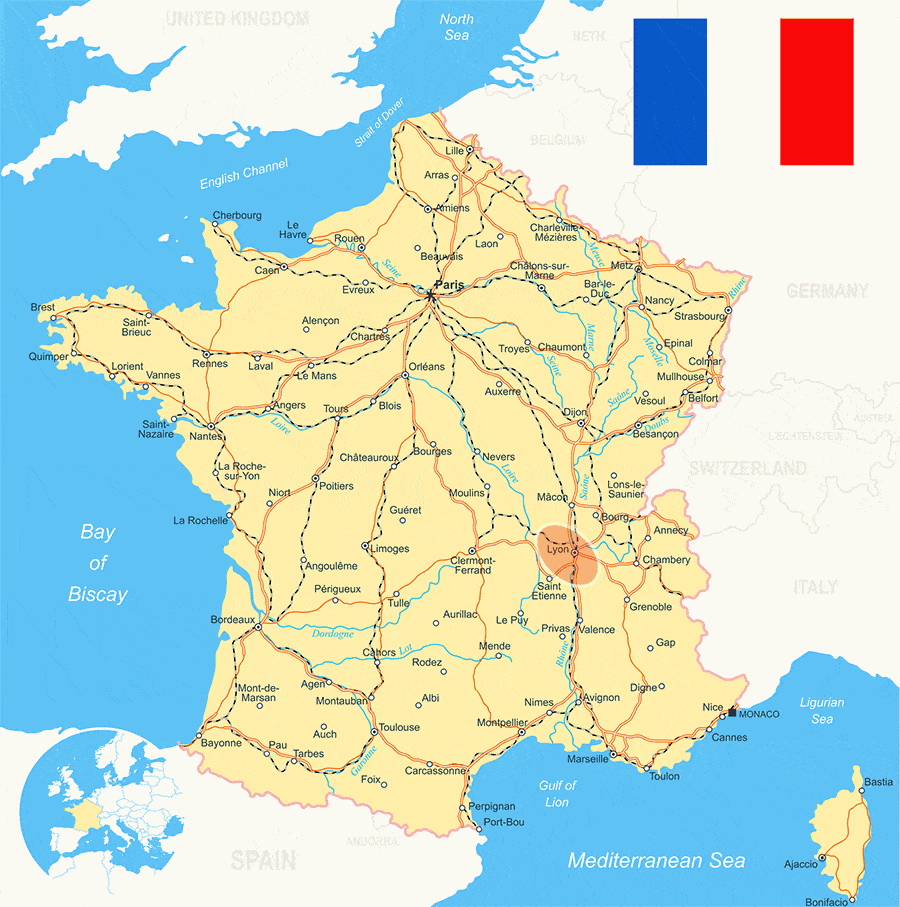
Lyon is France’s third-largest city and its undisputed gastronomical capital. However, it attracts just a fraction of the visitors as Paris but Lyon rewards the travelers who make the journey.
Why Lyon Is One Of The Best Places in France
Here are a few of the reasons why Lyon is so beloved by visitors and locals:
- Vieux Lyon: Lyon’s old town is the city’s historic city center that’s full of beautiful old buildings, cafes, restaurants, and loads of old-world charm and atmosphere.
- The Amazing Food: If you want to eat well in France then Lyon is the place to go. I particularly love that many of the best food can be found in a bouchon (affordable and friendly no-frills tavern-style restaurants).
- Basilica of Notre-Dame de Fourvière: The Basilica of Notre-Dame de Fourvière is the most famous building in Lyon and it’s built atop the city’s tallest hill.
- Les Traboules de Lyon: Lyon is famous for its Traboules — a type of secret covered passageway that was once used by merchants to transport their products through the city. There are over 400 in Lyon but around 40 are open to the public. These lead to quiet hidden courtyards that you’d otherwise miss if you didn’t know they were there.
- Parc de la Tete d’Or: Pack of picnic or have a wander around this beautiful large park.
- Grand Roman Theatre: Built in 15 BC, Lyon has the oldest Roman theatre in France.
- Les Halles de Lyon Paul Bocuse: An excellent indoor food market.
- Excellent Museum: The Museum Of Fine Arts holds one of the largest art collections in France and the Museum of Contemporary Art is also world-class.
Loire Valley
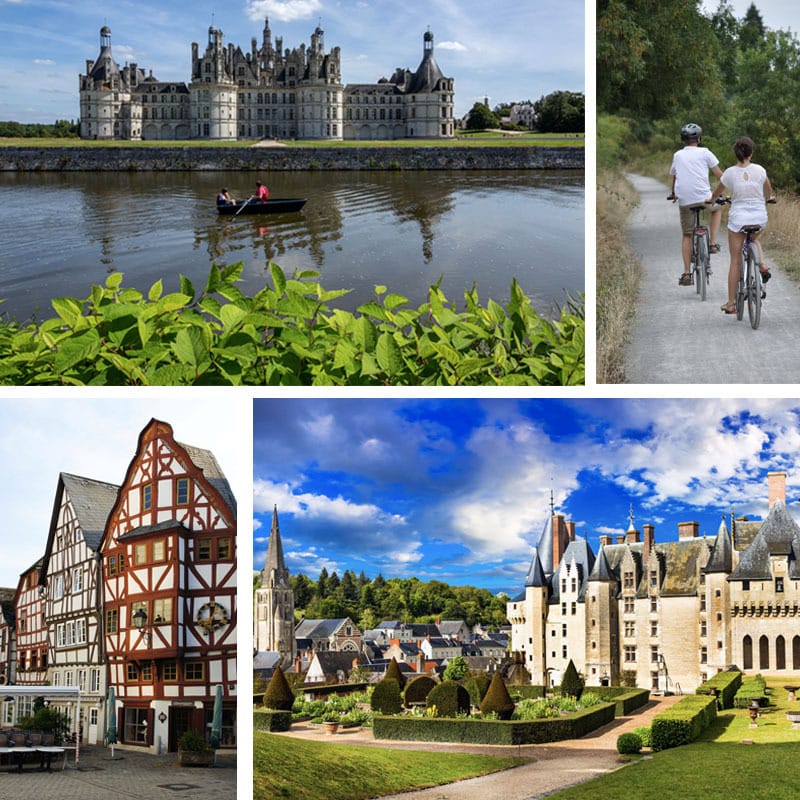
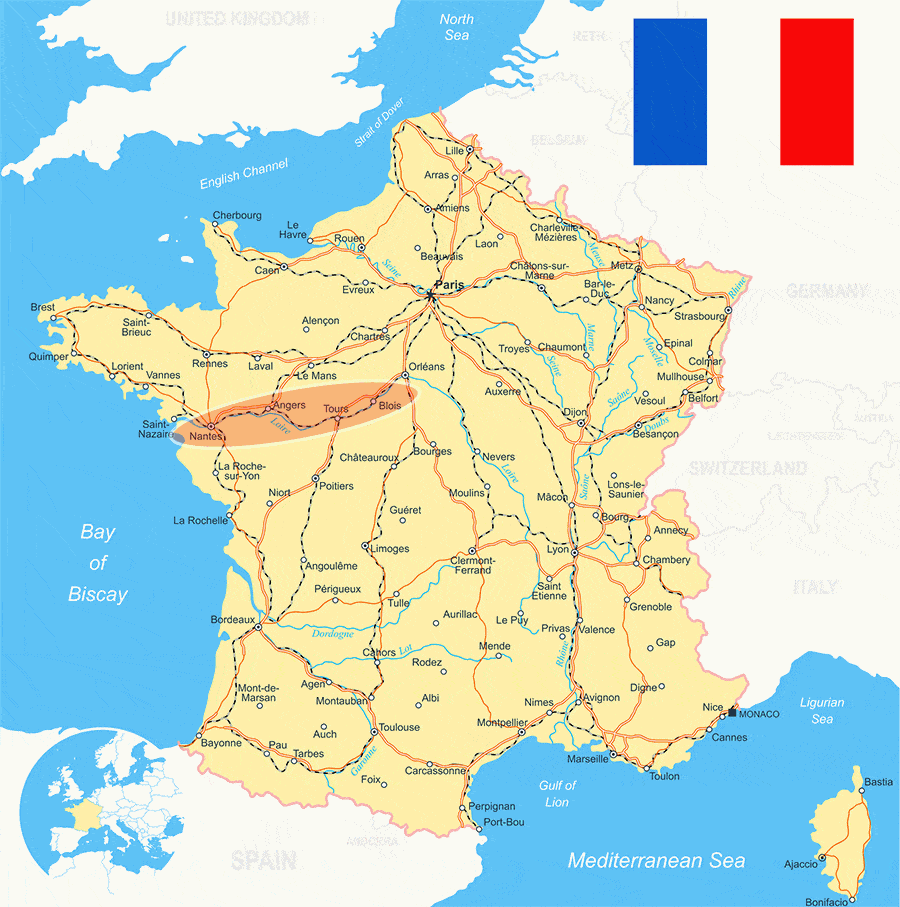
Centrally located along the Loire river, the Loire Valley is home to fairytale chateaus, beautiful vineyards that produce some of the best wine in France, quaint cities, and a network of lovely bike trails that connect everything together. The Loire Valley is often called “the Garden of France” and France’s “Valley of the Kings” so its romanticism and charm have attracted visitors for hundreds of years.
Why The Loire Valley Is One Of The Best Places in France
Here are a few of the reasons why the Loire Valley is so well-loved:
- Fairytale Chateaus: You’ll find more than 300 chateaus of various sizes scattered through the Loire and around 100 are open to visitors. The most popular are the Château de Chambord (which has over 400 rooms), Château de Chenonceau, and Château de Cheverny but there are plenty more.
- Vineyards and Beautiful Countryside: One of the greatest draws to the Loire Valley are the beautiful vineyards and countryside. Many vineyards offer tastings and tours or you can simply enjoy the region with your eyes as you drive the country roads admiring the Château-spotted landscapes.
- The Food and Wine: Many of the best wine in France is produced in the Loire Valley so just ask the waiters or sellers what they recommend — I prefer to drink what the locals drink. Furthermore, much of France’s produce is grown here so you can find excellent things to eat.
- Biking The Loire Valley: La Loire à Vélo (The Loire by Bike) is a well-marked and paved bike trail that runs near 500 miles through the Loire Valley. The path connects many of the most popular cities like Orléans, Blois, Amboise, Tours, Saumur, Angers, and Nantes as well as small villages along the way.
- Chartres and Chartres Cathedral: The city of Chartres is home to Chartres Cathedral — one of the finest Gothic cathedrals all of Europe and it has the most complete set of medieval stained glass.
- Medieval Cities and Towns: The Loire Valley has a handful of excellent small cities and towns that make nice places to explore or as a home base as you visit the rest of the area. Orléans is the capital of the region and it’s a great place to visit but Tours is the largest city and has the most charm and energy. Other popular destinations are Angers, Amboise, Loches, and Blois.
Strasbourg and the Alsace Region
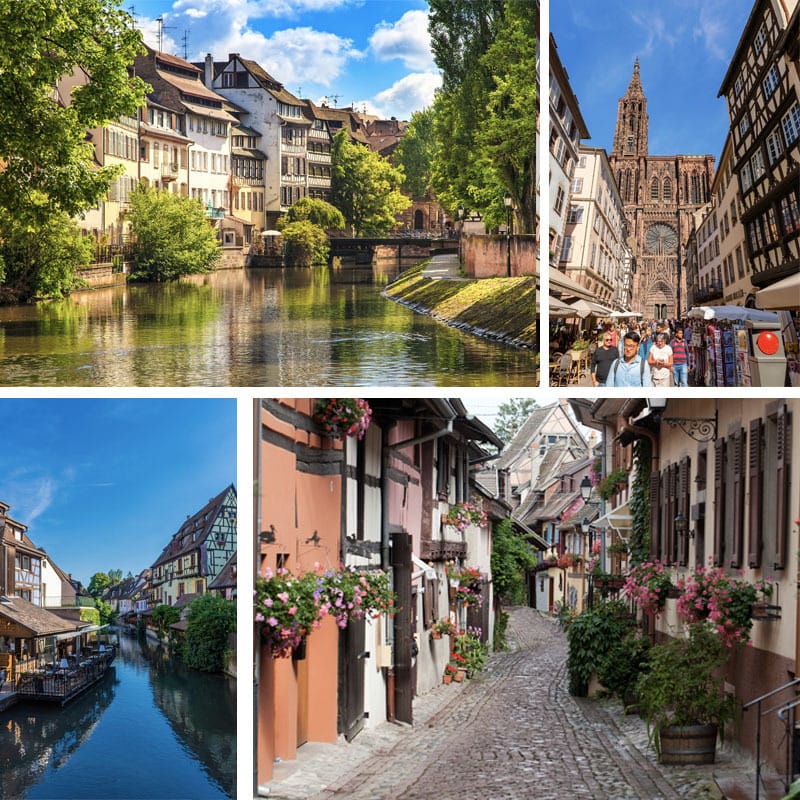
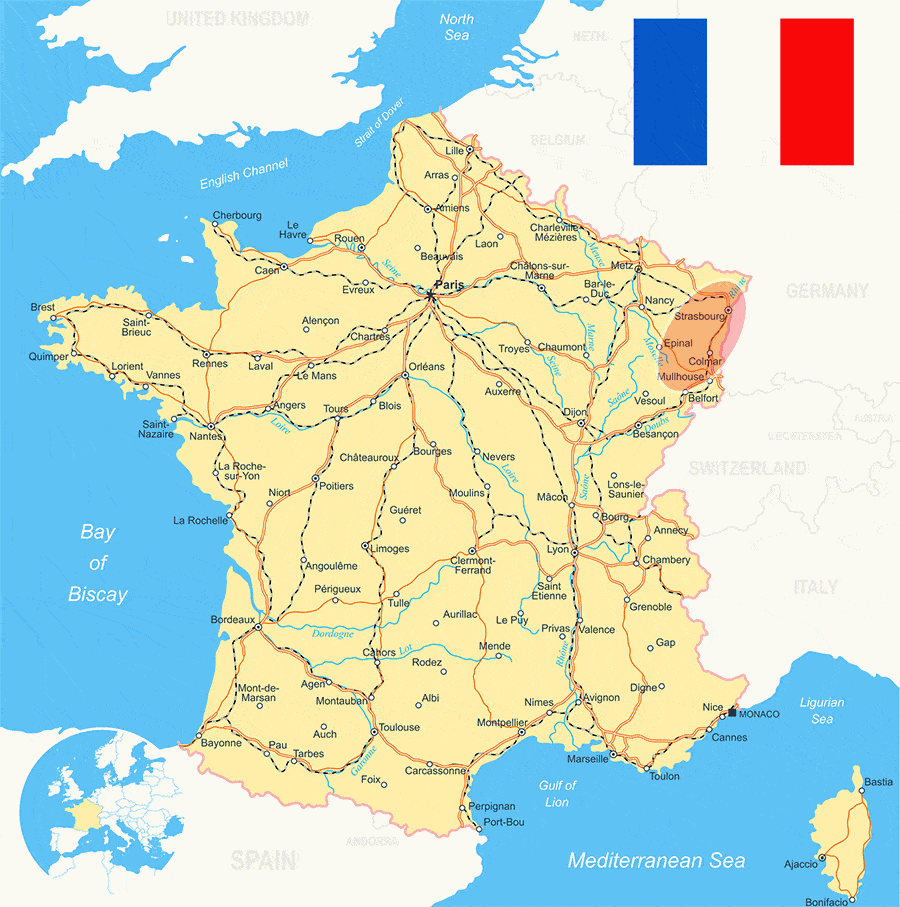
Located near the German border, everything about the charming city of Strasbourg reflects its blend of German and French influences (the city has switched ownership between Germany and France multiple times). It’s remained a bit of a hidden gem since it’s not a stereotypical “French” city but it’s hard to deny that Strasbourg is one of the most beautiful cities in France.
Why Strasbourg Is One Of The Best Places in France
Here’s a quick look at the highlights on Strasbourg:
- French and German Fusion: Half-timbered houses, multiple local breweries, great regional wines, tarte flambée, braided pretzels, spaetzle, kougelhopf cake… Strasbourg is like no other city in France.
- Medieval, Renaissance, Romantic, and Art Nouveau era Architecture: Seeing how Strasbourg has straddled multiple different cultures and countries over the years, it’s picked up multiple different architectural styles. It’s seriously beautiful and it feels like you’re living in a fairytale.
- UNESCO Historic City Center: UNESCO found that the entire city center of Strasbourg was worthy of being deemed a UNESCO Historic Site.
- Student Youthful Vibe: Strasbourg is a popular student city with nearly 20% of the population being students — which means there are plenty of budget-friendly bars and restaurants.
- Strasbourg Cathedral: Victor Hugo once called Strasbourg’s Cathedral “a prodigy of the gigantic and the delicate” and it’s a must-see sight.
- La Petite France: The La Petite France is a beautiful and quaint neighborhood of Strasbourg that’s surrounded by four canals and dates back to the 16th and 17th centuries with a few of the town’s ramparts dating back to the 14th century.
- France’s Best Christmas Market: If you’re visiting during the holidays then you can’t miss France’s largest and one of Europe’s oldest Christmas markets (it dates back to 1570).
- The Wine: The Alsace region has been producing wine since the 2nd century and today you’ll find over 800 vineyards. Its most famous wines are dry Rieslings, Pinot Blanc, Pinot Gris, Gewurztraminer, and Crémant d’Alsace (sparkling wine).
- Colmar Daytrip: About a 30-minute train ride from Strasbourg is Colmar. Said to be the inspiration for the village from Beauty and the Beast, it’s one of the cutest places in France and another “fairytale” town. Nearly every building in the center of Colmar is a picturesque half-timbered house painted in pastel colors so it’s a feast for the eye.
Marseille
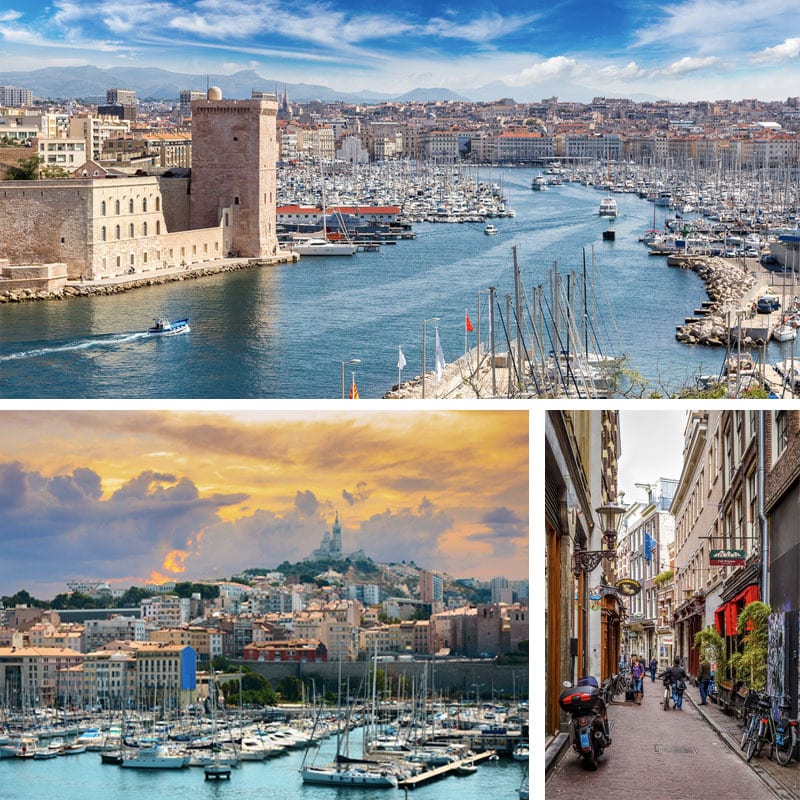
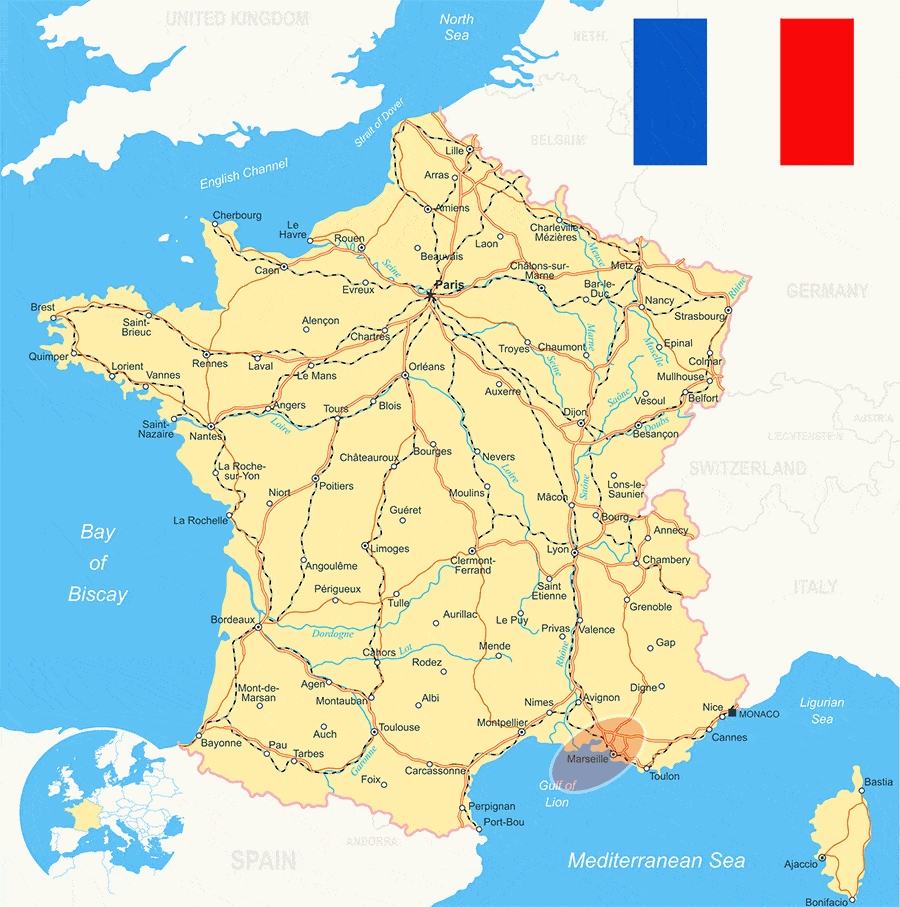
France’s second-largest city, Marseille has long been rough around the edges thanks to its busy port and high poverty rates. It’s also a city with a lot of heart, great seafood, and an authentic laid-back vibe that’s a worthwhile stop for a seasoned France traveler or someone looking to get off-the-beaten-path.
Why Marseille Is One Of The Best Places in France
- Vieux-Port (Old Port): The start of the show in Marseille is the Vieux-Port (Old Port) and the surrounding old town. You’ll find small fishing boats in the port every day selling their fresh catch to the locals and the restaurants.
- Le Panier Neighborhood: Marseille’s oldest neighborhood is a hilly labyrinth of narrow streets, terraced buildings, cafes, and sun-faded ambiance.
- Culture Mix: The site of modern Marseille dates back to 600 B.C as an important hub of trade and immigration — which always brings a mix of cultures. Walking around the streets you’ll hear multiple languages and see this influence of mingling cultures.
- Notre Dame de la Garde Basilica: This Romanesque-Byzantine church is the most famous symbol and it’s located on the highest point in the city — there are excellent panoramic views from the top.
- Fresh Seafood: You’ll find some of the freshest seafood in France in Marseilles — many of the restaurants serve fish that’s been caught within a few hours.
- Calanques National Park: The jagged limestone cliffs overlooking the Mediterranean Sea are a sight to behold. Many view them from the water but it’s also a great hiking spot.
- Day Trips: Marseilles is the largest city in the south of France so it’s well connected to plenty of other cute towns like Aix-en-Provence and Cassis.
Provence Countryside & Smaller Towns
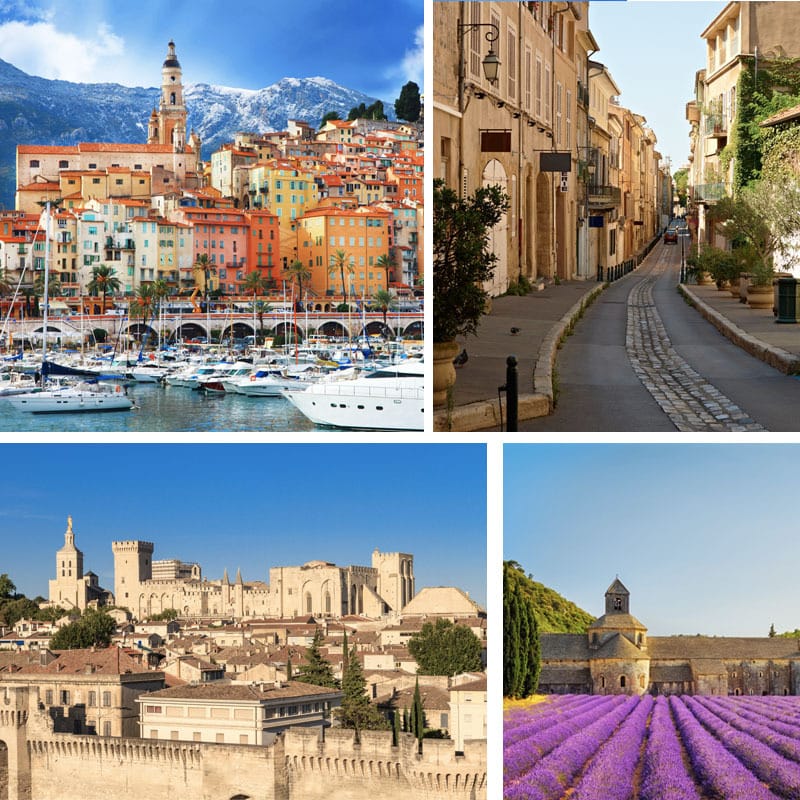
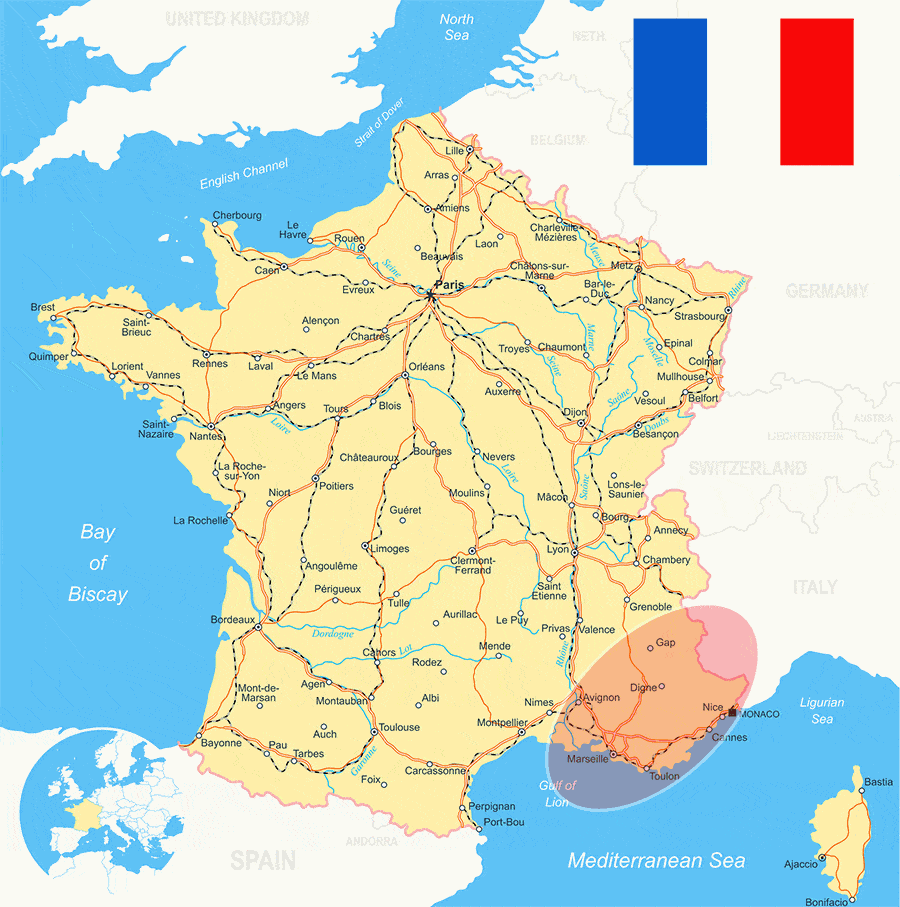
We’ve already covered the two main cities in Provence (Nice/Côte d’Azur and Marseilles) but France’s Provence region is full of smaller cities and towns that can be strung together for a relaxing, sunbaked vacation full of wine, lavender fields, medieval architecture, and beautiful national parks and nature.
Why Provence Is One Of The Best Places in France
- Avignon: Known as the gateway of Provence, the medieval city of Avignon is full of charm and its old town feels almost like a village where you’ll love getting lost wandering the ancient streets. Avignon was also home to the pope back in the 14th century and its Palace of the Popes is one of the largest and most important medieval Gothic buildings in Europe.
- Aix en Provence: The elegant city of Aix en Provence is one of the best cities in Provence not only for its central location (many of the smaller cities/towns are less than an hour from Aix), but Aix is a lovely city that boasts over 1000 fountains, regal architecture, romantic narrow streets, warm and sunny weather, and great regional food. Aix is also one of France’s largest university towns so it has a youthful vibe.
- The Luberon National Park: Spectacular countryside of vineyards and orchards, beautiful “perched” hill-top villages. Much of the area is protected to preserve the charm. Fans of Peter Mayle’s “Year in Provence” will be familiar with this area.
- Tiny Towns and Villages: Provence is full of beautiful old towns and villages like Arles, Briançon, Grasse, Menton, Orange, and Saint Paul de Vence (to name a few).
- Lavender Fields: Many of France’s iconic lavender fields are found in Provence. The best time to visit is late June/early July.
- Local Wines and Cuisine: Provence is famous for its regional wines (especially its Provencale Rosé) and food. Just try whatever the locals drink and eat.
Normandy and Mont Saint-Michel
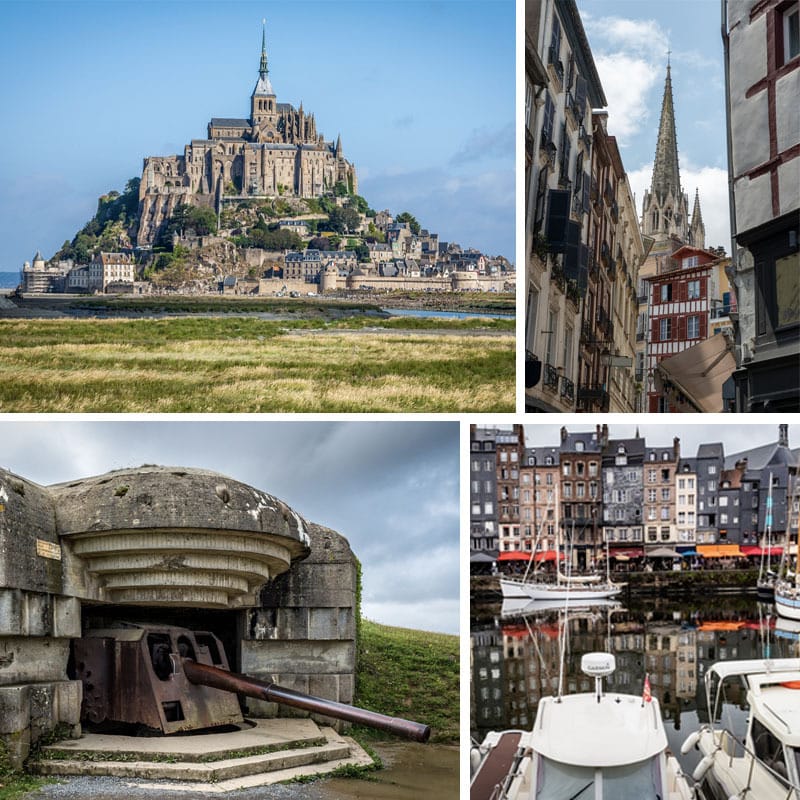
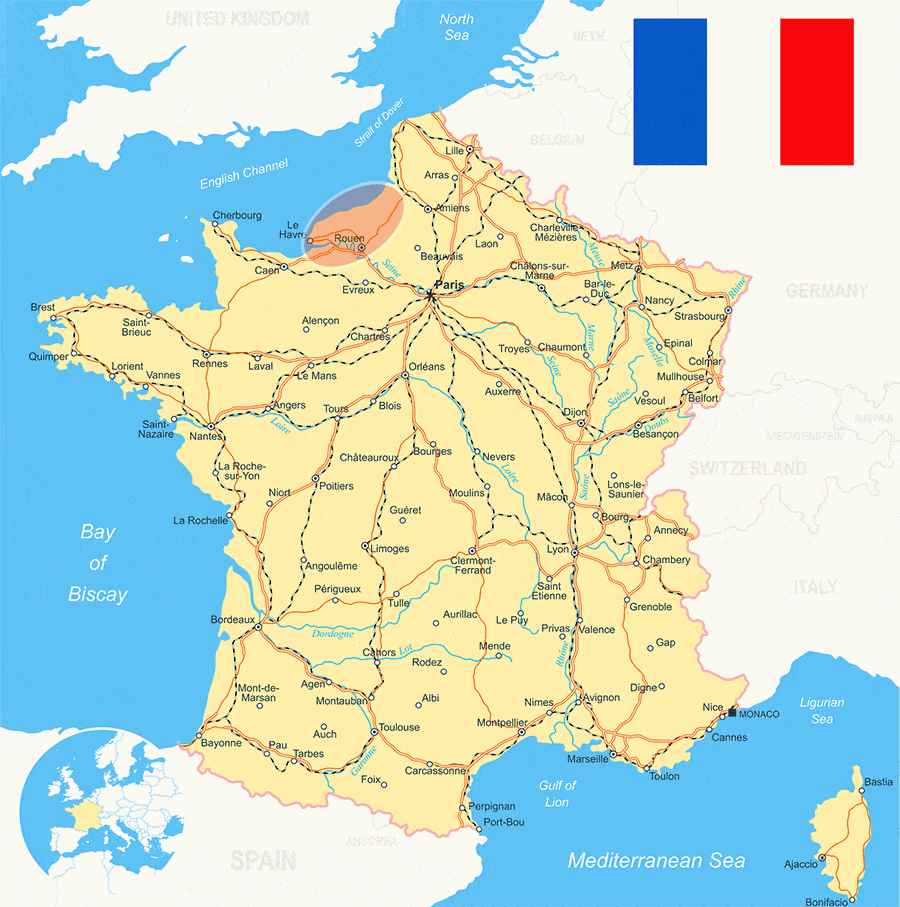
Located in northern France, the Normandy region is famous for its WWII landing beaches and the impressive Mont Saint-Michel, but this charming rural and seaside area of France offers plenty more for visitors to explore. Normandy is best explored via car as train service can be limited outside the larger cities but the bigger cities make great day trips from Paris.
Why Normandy Is One Of The Best Places in France
Here are a few reasons who Normandy is worth visiting:
- Local Cuisine: Normandy is known for its cheeses, Calvados (apple brandy), apple cider, mussels, and some of the best seafood in France.
- Mont Saint-Michel: One of the most famous and impressive sights in all of Europe is the soaring Gothic abbey of Mont Saint-Michel.
- Giverny and Monet’s Garden: Monet’s house and garden in Giverny is one of the most popular day trips from Paris and it’s where Monet painted some of his most famous paintings — including his Water Lilies.
- WWII Landing Beaches: The Normandy coast consist of ruggedly beautiful white-chalk cliffs and sandy beaches. You can also tour the various landing beaches, the Museum at Omaha Beach, and the old German fortifications.
- Rouen: The port city of Rouen, which dates back to the Roman era and Middle Ages, is located on the Seine river and is the capital of the Normandy region. Rouen is famous for its Notre Dame cathedral (the tallest in France), quaint city center, and its Gros-Horloge fourteenth-century astronomical clock.
- Honfleur: The small harbor town of Honfleur is full of charming cobbled alleys and half-timbered buildings but it’s most famous for its gorgeous Vieux-Bassin (old harbor) which is lined with townhouses that date back to the 16th to 18th centuries.
- Barfleur: The picturesque fishing village of Barfleur (population of 700) has been named Plus Beaux Village de France (one of France’s most beautiful villages). It’s a nice place to spend a lazy half day.
- Bayeux: The medieval town of Bayeux is most famous for its Norman-Gothic cathedral and its 68-meter Bayeux Tapestry — an 11th-century tapestry depicting the 1066 Norman invasion of England. Bayeux is also a popular home base for exploring the D-Day beaches and the rest of Normandy.
Lille
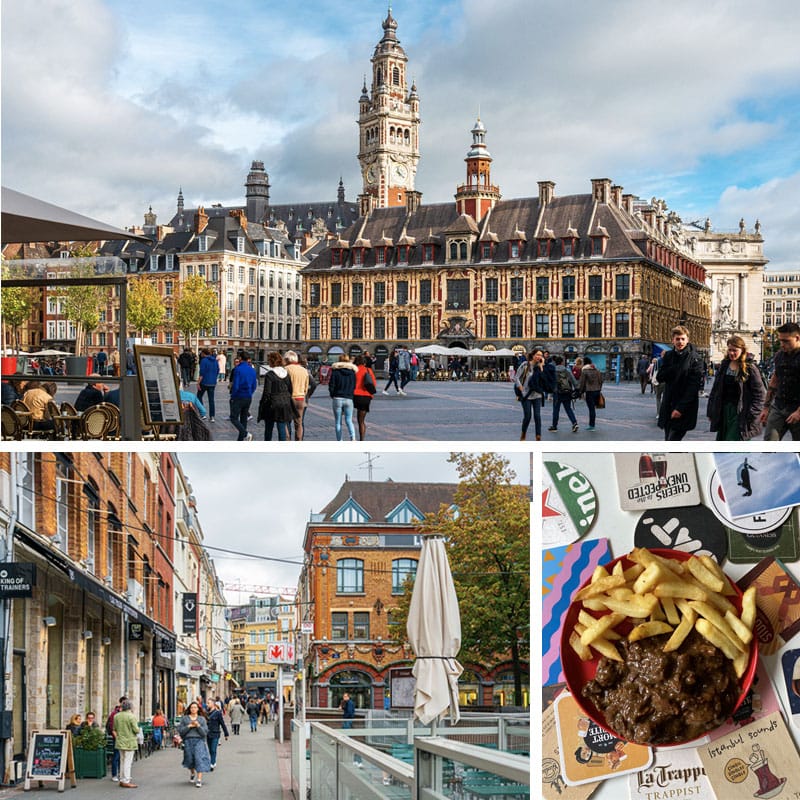
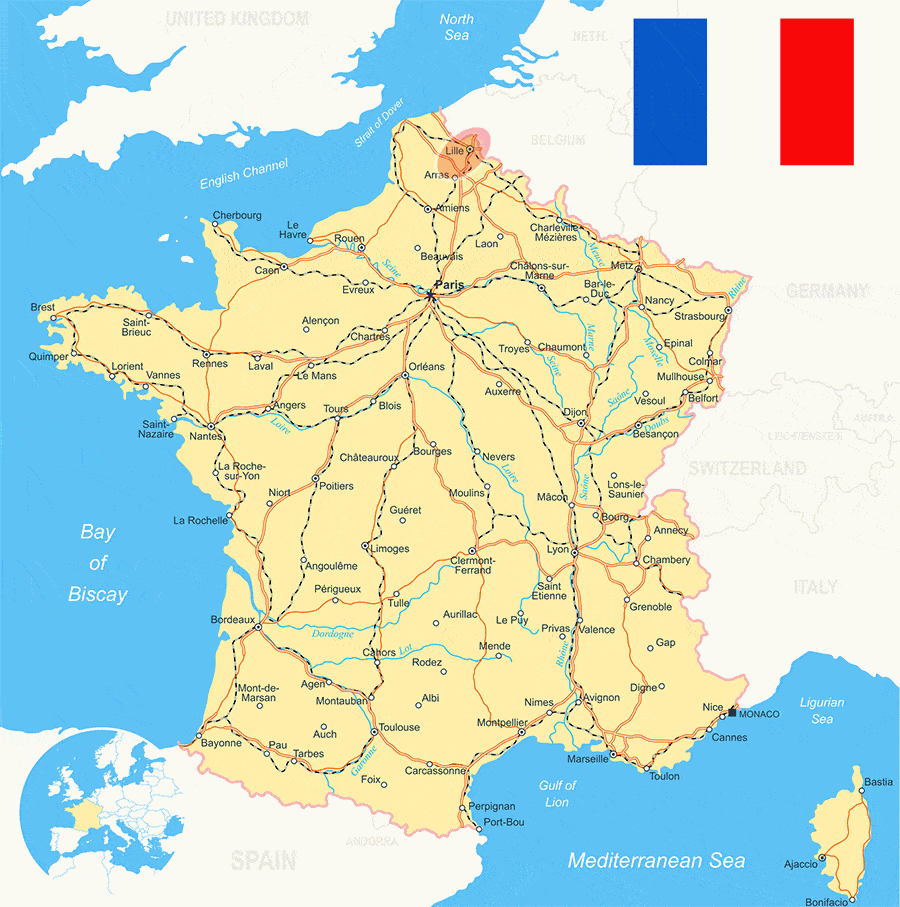
Located in northern France along the Belgian border, the city of Lille has remained somewhat of a hidden gem as most visitors of France stick to Paris or the warmer climate of the south. But Lille has plenty to offer visitors who venture up north like Flemish-style architecture, hearty food thanks to the influence from their Belgian neighbors, moules-frites (mussels and fries), beer, and friendly locals.
Why Lille Is One Of The Best Places in France
Let’s take a look at what makes Lille worth visiting:
- Flemish Architecture: Lille is the capital of Flanders so much of its red-brick buildings and medieval architecture can be contributed to the city’s heavy Flemish influence — which makes the city look much different than the rest of France. And then throw in some traditional French architecture into the mix and you have a feast for the eyes.
- Hearty Cuisine: Taking influence from Belgium, Lille’s local cuisine is hearty and delicious. Local specialties include carbonnade flamande (beef stew, brewed in beer), moules-frites (mussels and fries), french fries with every sauce imaginable.
- Regional Beer: While France has a long history of wine production, the north of France again takes its cues from Belgium so you’ll find a huge selection of (strong) beers. Many of the beers here aren’t exported so it’s a great opportunity to try a few hard-to-get options.
- Excellent Art: The Palais des Beaux-Arts museum is France’s second-largest general-interest museum after the Louvre.
- Youthful City and Nightlife: Lille is home to more than 60,000 university students so it has a lively nightlife and plenty of cheap places to eat and drink.
- Fast Train Connections: The Eurostar train that goes between London and Paris stops in Lille and there is a high-speed train between Paris and Brussels that also stops in Lille — making it easily accessible.
Burgundy
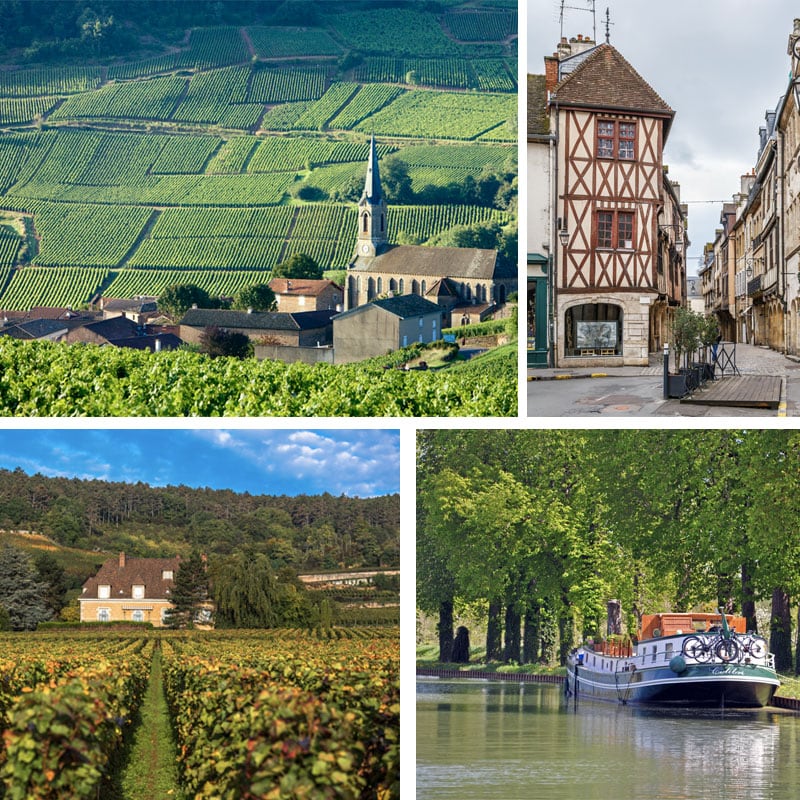
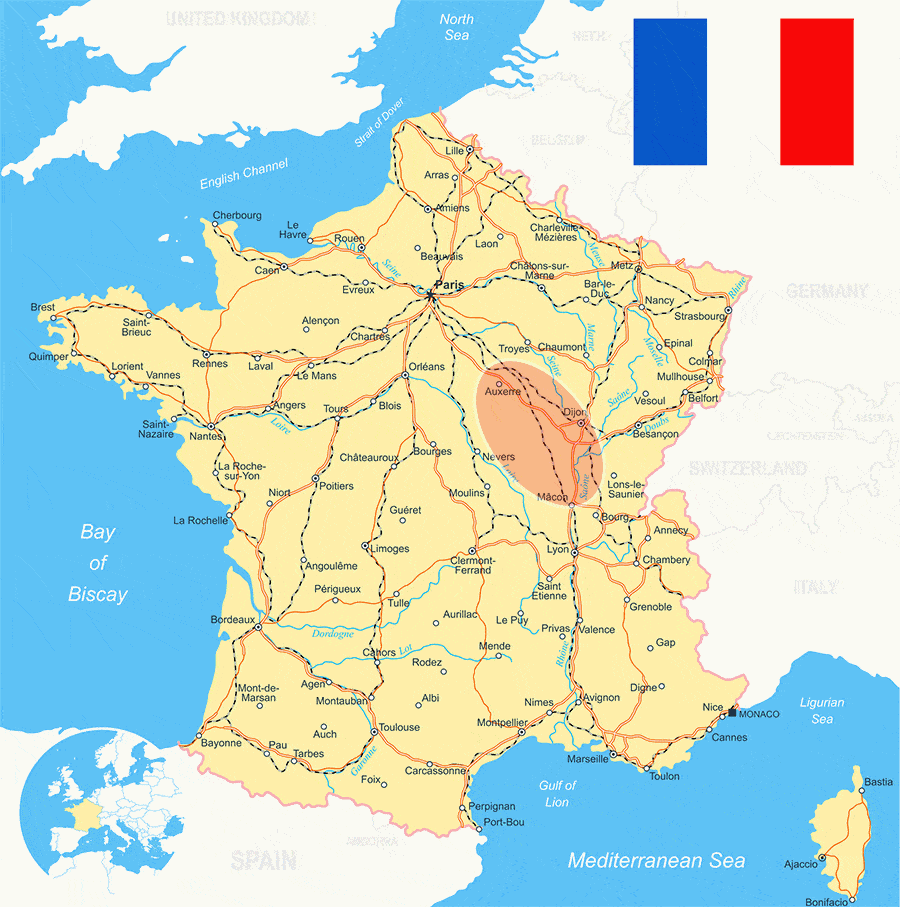
Next, we turn to another one of France’s most iconic wine regions that reward visitors with an opportunity to slow down and savor the good life — from its world-class wines to its peaceful, unspoiled countryside. Many of the vineyards are connected by bike paths and country roads so exploring is easy. You can also explore the region via the 150-mile Burgundy Canal that gently cuts through the region.
Why Burgundy Is One Of The Best Places in France
- Vineyards and Regional Wines: Burgundy is famous for its dry red wines made from Pinot Noir grapes and white wines made from Chardonnay grapes. Many of the area’s vineyards are open to the public (some offer tours and tastings while others will just sell you bottles).
- Biking and Hiking: One of the best things about Burgundy is exploring its quiet countryside and they’ve made it easy by building a series of bike and walking trails that are closed to cars. Many of these trails connect the vineyards so you can stop by a few for a tasting.
- Beautiful Countryside: In a country full of gorgeous countryside, Burgundy offers up some of the best in France — including the vast Morvan Regional Natural Park. The smaller villages and countryside are best explored via car (or bike if you’re staying local).
- Burgundy Canal: Back in the late 1700s France build a 150-mile canal that connects the Atlantic to the Mediterranean and it cuts through the Burgundy region. These days you can rent a boat or book a boat ride as you peacefully float along the canal.
- Dijon: The medieval city of Dijon may be most famous for its mustard but this lively small city makes a nice day trip to experience its Gothic and Romanesque architecture and
- Beaune: The beautiful small walled town of Beaune is located right in the middle of this wine region so the vineyards are right outside the city walls. This Beaune a nice home base if you’re wanting to explore the region for a few days.
- Vézelay: The tiny picturesque hilltop village Vézelay features an Abbey that dates back to 1120 and has been a pilgrimage site for hundreds of years.
- The Food: The Burgundy region is also famous for many of France’s most famous dishes like beef bourguignon, coq au vin, escargot, and multiple styles of cheese.
Reims And The Champagne Region
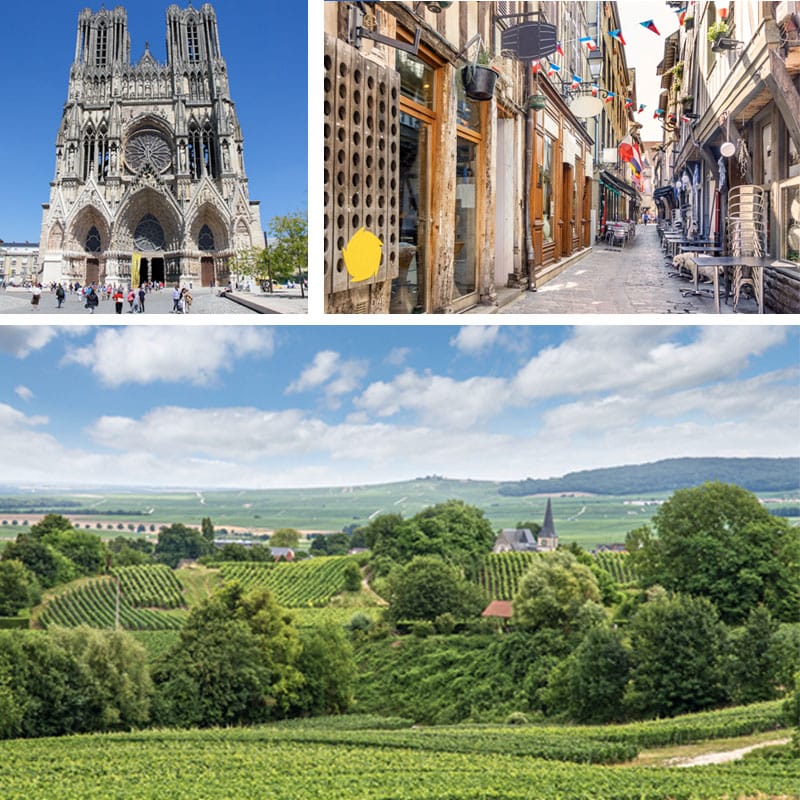
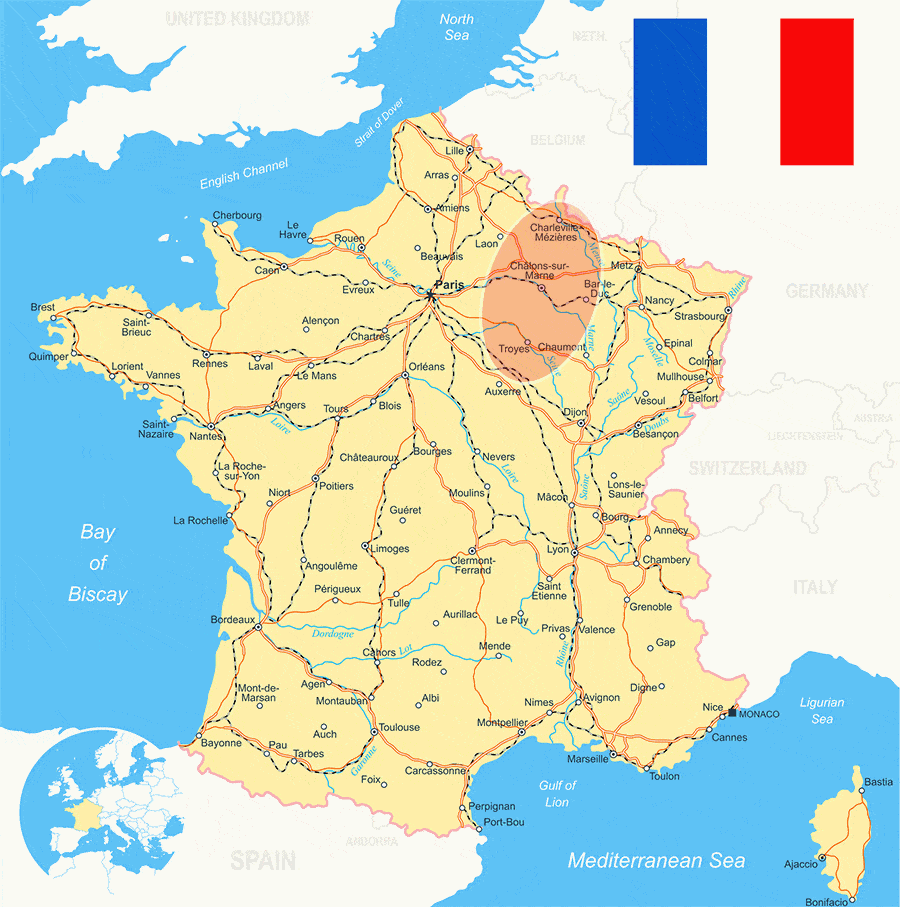
The Champagne region in France and this special area is home to all the famous champagne houses like Veuve, Mumm, etc. — in fact, this is the only region in the world where champagne can be legally produced (it’s sparkling wine when produced elsewhere). And while most of the region is dedicated to growing wine, there are a few lovely cities like Reims and Epernay that make the region worth a visit (it’s also an easy day trip from Paris).
Why Champagne Is One Of The Best Places in France
- Vineyard Tours: Much of the area is dedicated to growing grapes and producing Champagne and other wines. That said, visiting various vineyards can be difficult on your own so a tour is the easiest option. That said, if you have a car and don’t mind planning, you can visit many on your own as well.
- Cellar Tours: Many of the champagne houses offer cellar tours where they show you how champagne is made, stored, and aged. Tours also often include a champagne tasting as well. The tours at Moët, Pommery, and Mercier are all good but there are plenty of others as well.
- Reims: The city of Reims is the largest in the region and it’s famous for its magnificent Gothic Cathedral. It’s also a lovely town to spend the day exploring. There are also a few Champagne houses here that offer tours and tastings. Reims is also a university town so it offers decent nightlife if you stay overnight.
- Epernay: More of the self-proclaimed capital of Champagne, Epernay is home to many of the top Champagne producers. It’s a small but cute town and you can walk down the Avenue de Champagne to see all the mansions owned by the Champagne companies (many offer tours and/or tastings).
- Troyes: The medieval town of Troyes is the ancient capital of the Champagne region and its old town features narrow cobbled streets and colorful, half-timbered houses. Troyes is also home to several Gothic churches with stained-glass windows that date back as far as the 13th century. Much of the town dates back to the sixteenth century so it’s a good place to visit to get a sense of what Europe looked like hundreds of years ago.
Brittany
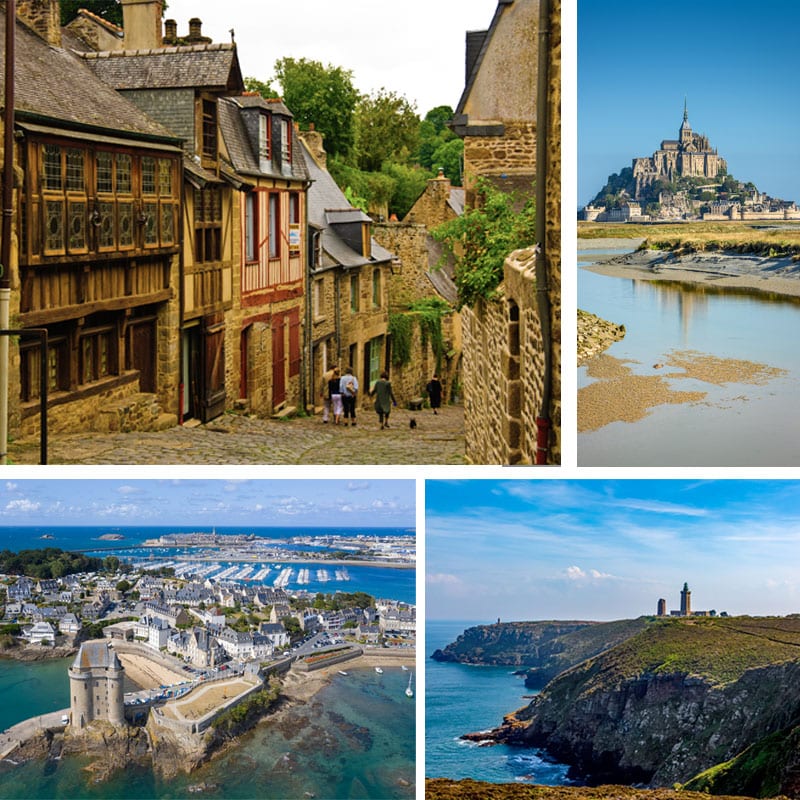
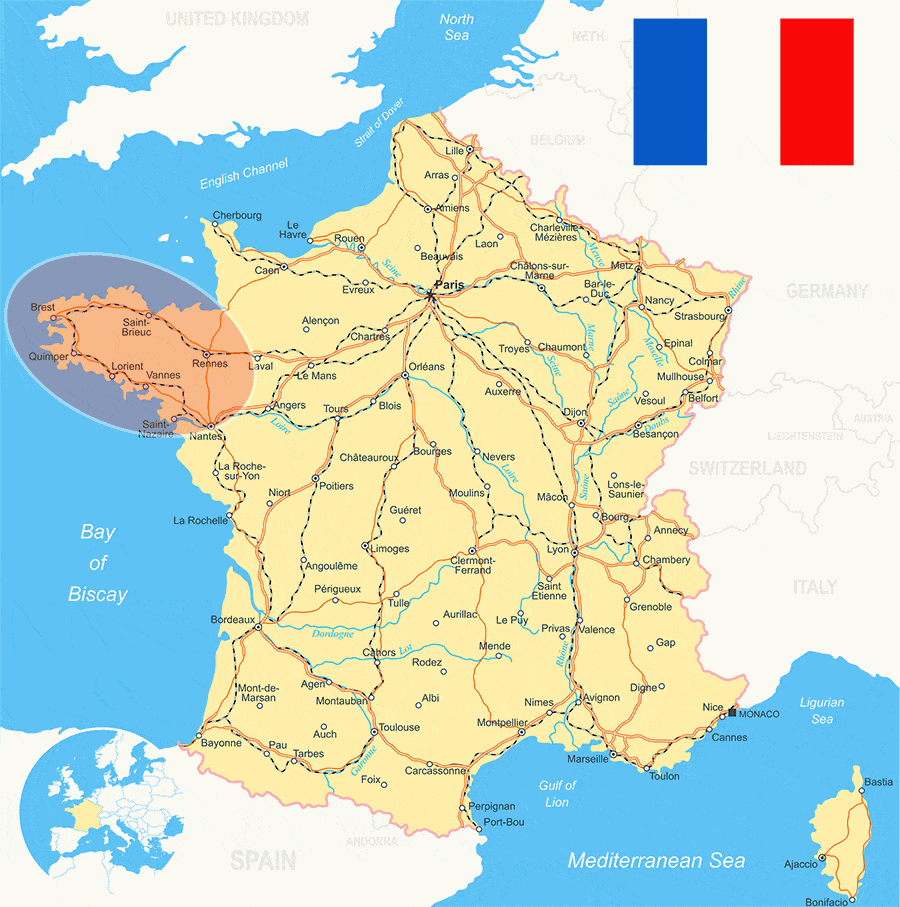
Located in France’s northwestern region, Brittany is famed for its rugged coastline, quiet fishing villages, historic ports, and calm beaches. Brittany’s Celtic heritage also gives this region its own unique vibe and the locals consider themselves Bretons before calling themselves French. Brittany isn’t one of France’s most visited destinations so you’ll get a more authentic experience.
Why Brittany Is One Of The Best Places in France
- Cute Towns and Quiet Fishing Villages: Brittany is a region of cute small towns and sleepy stone-built fishing villages that date back hundreds of years. Some of the most popular towns are Auray, Dinan, Pont-Aven, Rennes, Brest, Concarneau, Dinard, Fort la Latte, Fougères, and Josselin.
- The Brittany Coast: Brittany’s iconic coastline is the most defining aspect of the region. And while it’s often depicted as heavy waves hitting the breakers, Brittany’s coastline is actually has everything from quiet sandy beaches to pebbly coves to large sand dunes.
- Saint-Malo: The fortified town of St Malo is the most visited town in Brittany. Take a walk around its stone ramparts while admiring the town’s tall granite buildings, old cobbled streets, and nice beaches.
- Mont Saint Michel: Technically Mont Saint Michel is located in Normandy (which we’ve already covered earlier in this guide) but its proximity makes it a popular destination for people visiting Brittany.
- Breton Cuisine: In addition to having excellent seafood, Breton is famous for its crêpes and galettes. And while this isn’t a wine region, Brittany is an apple-producing region so they have great cider.
- Hike Le Sentier des Douaniers: GR34, aka Le Sentier des Douaniers, is a 1100+ mile hiking path that runs along the entire Breton coastline.
Dordogne River Valley
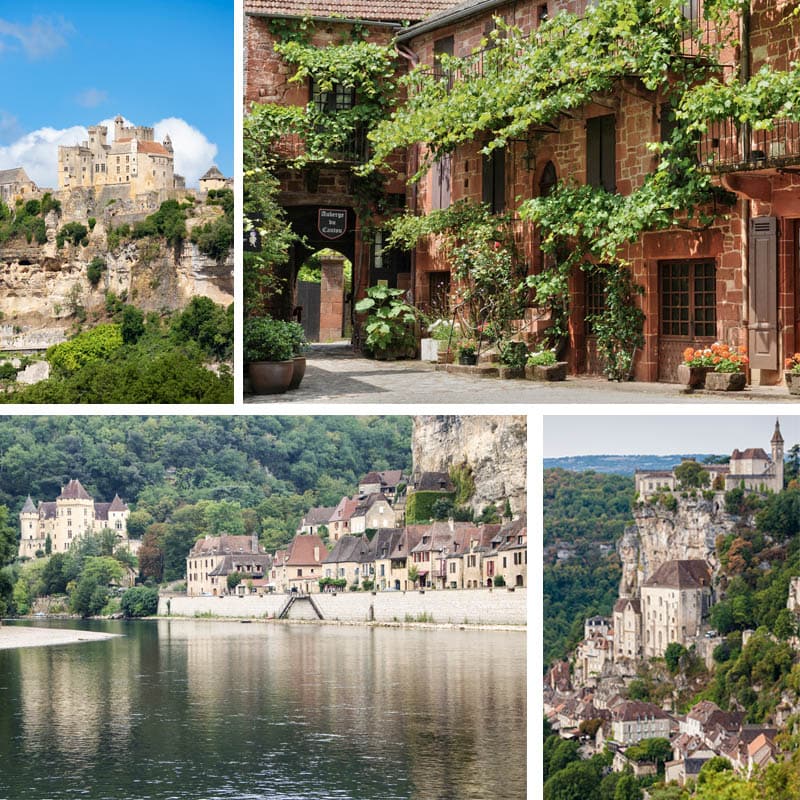
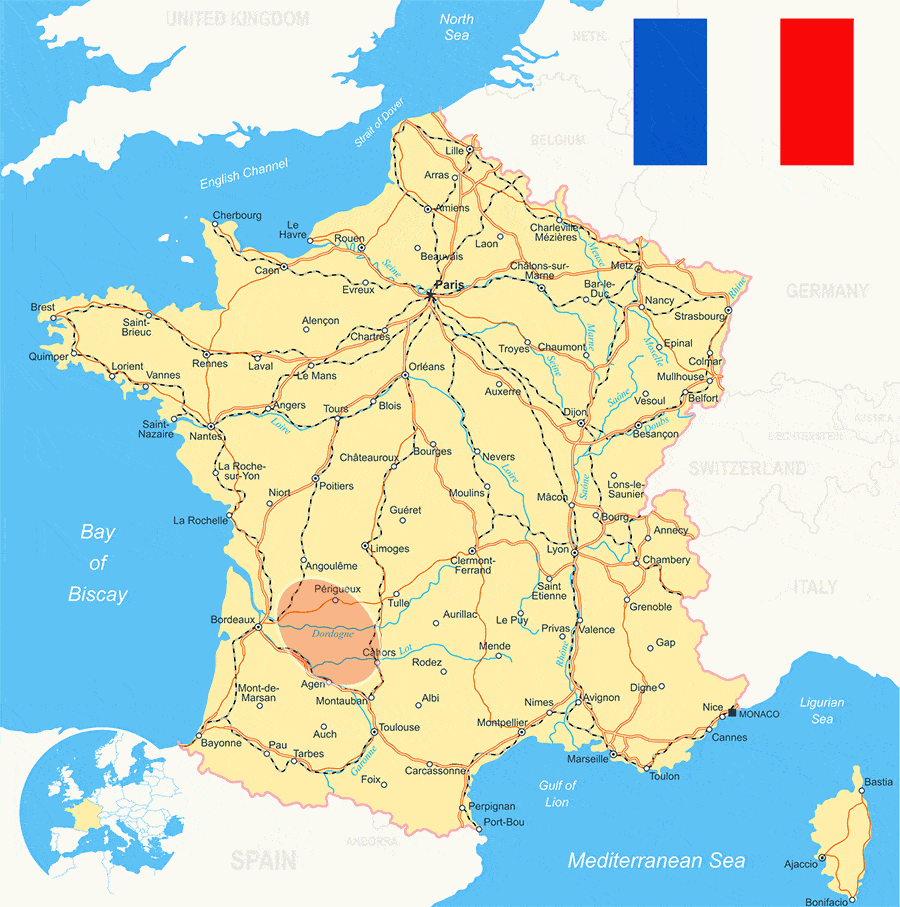
Set between the Loire Valley and Pyrenees mountains, the Dordogne River Valley is one of the most overlooked yet most beautiful regions of France — although it’s starting to become more popular. To best explore this region’s natural beauty, quaint villages (many are on France’s “most beautiful towns” list), and old castles it’s best to explore via car.
Why The Dordogne River Valley Is One Of The Best Places in France
- Rocamadour: This small clifftop medieval village is a must-visit when touring the Dordogne. It’s also famous for its Rocamadour cheese.
- Sarlat: The beautifully restored medieval town of Sarlat is the region’s gastronomic center — particularly for foie gras and truffles. Sarlat is the most famous and most-visited town in the region and it makes a good jumping-off point for other smaller towns in the region.
- Collonges-la-Rouge: This little hamlet village is on France’s list of the most beautiful towns in France thanks to its red brick medieval architecture.
- Bergerac: The town of Bergerac is in the middle of the region’s vineyards so it’s a great place to sample a few local wines.
- Dordogne River Activities: There are plenty of places to rent kayaks, canoes, and paddleboards if you’re wanting to explore the gentle Dordogne River.
- Beautiful Villages: La Roque-Gageac, Brantôme, Monpazier, Issigeac, Eymet, and Domme are all beautiful small villages worth a wander.
- Prehistoric Cave Paintings: The region is also home to many excellent prehistoric cave paintings but many are closed to the public due to deterioration caused by public visits.
- The Chateaus: The region is home to more than 1000 chateaux and a good number of them are open to the public. A few of the most populare are Chateau de Beynac, Chateau de Castlenaud, Château de Bridoire, Château de Hautefort, and Château de Jumilhac.
Languedoc Region
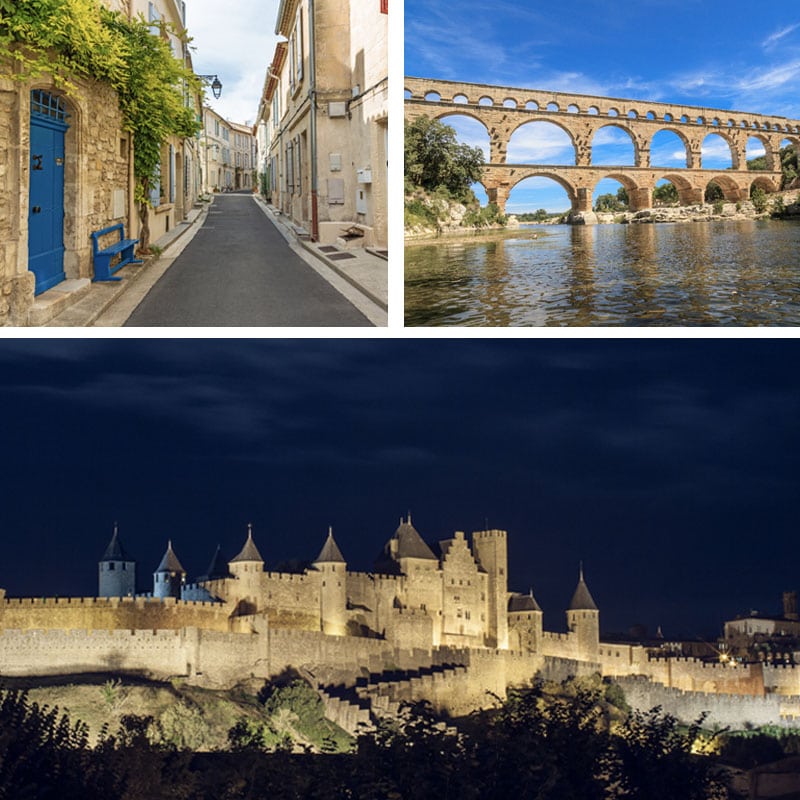
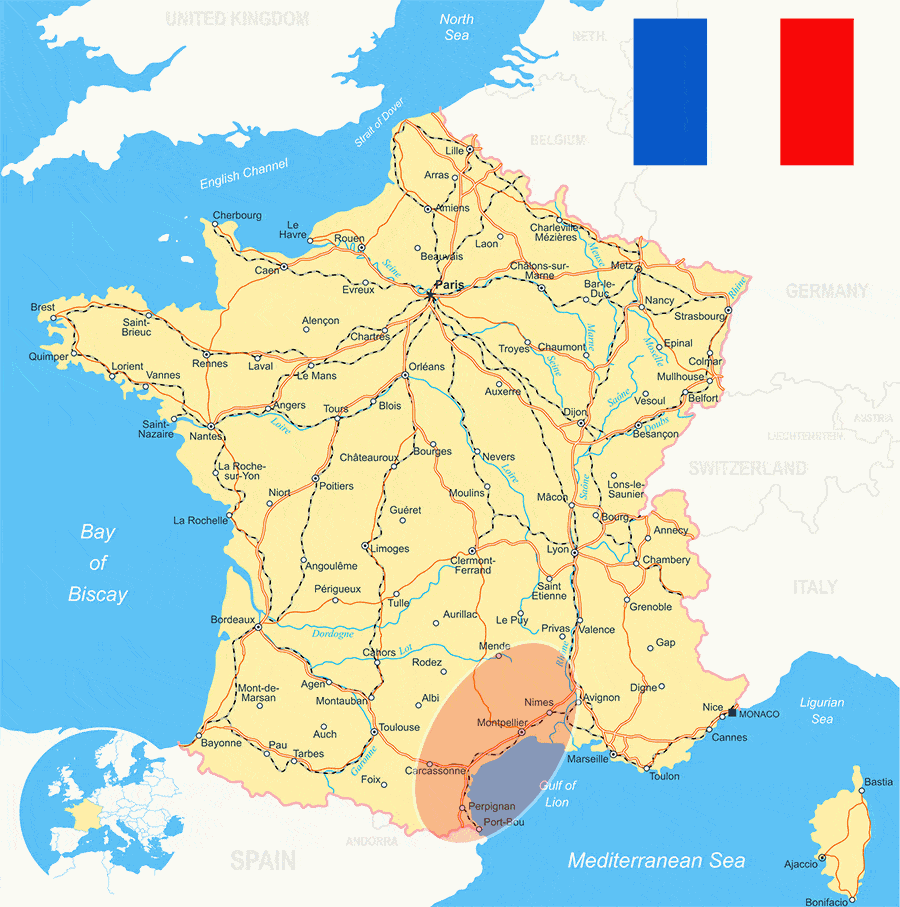
Bordering Spain and the Mediterrane sea, the Languedoc region is located along the southern coast of France and extends from Provence to the Pyrenees Mountains. The Languedoc is a major wine-producing region that’s famous for its excellent bold wines, rosé, and sparkling Crémant. While it has much of the charm as Provence, the Languedoc is less visited and a bit more affordable.
Why The Languedoc Is One Of The Best Places in France
- Carcassonne: This walled hilltop town is famous for its medieval fortress that features sturdy city walls that date back to Roman times and its 12th-century castle located within the city walls. Be warned that this is a very popular site so expect large crowds during the day in the tourist season.
- Montpellier: The second-largest city in the region and overshadowed by other cities in the region, Montpellier is a nice mix of medieval and modern that keeps its youthful vibe thanks to its large number of university students.
- Nimes: Once an outpost of the Roman Empire, Nimes is famous for its extremely well preserved 2,000-year-old Roman amphitheater (which is still used), other Roman architecture throughout the city, and the Roman Pont du Gard aqueduct.
- Toulouse: The largest city in the region and the fourth-largest city in France, Toulouse is known as “The Pink City” thanks to the pink terra-cotta bricks used in many of its buildings.
- Arles: The former provincial capital of ancient Rome, Arles is home to many Roman remains but it’s most famous for the Arles Amphitheatre. Arles is also famous for being where Van Gogh painted many of his most famous works.
- Perpignan: Located near the Mediterranean coast and the border of Spain, Perpignan is a lovely town with a medieval old town and rich cultural history.
Biarritz, Bayonne & Saint-Jean-de-Luz (France’s Basque Country)
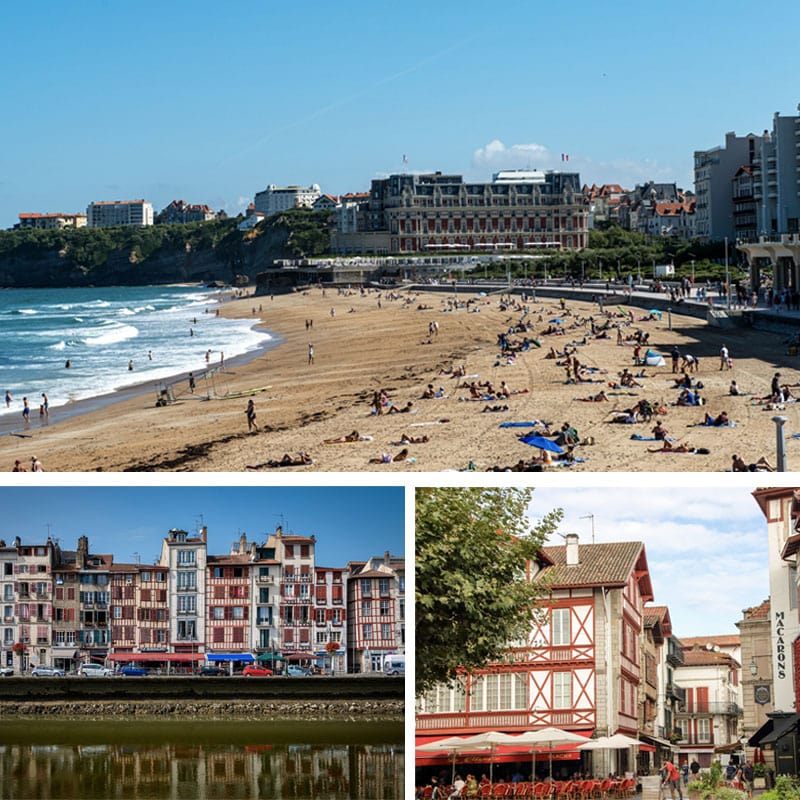
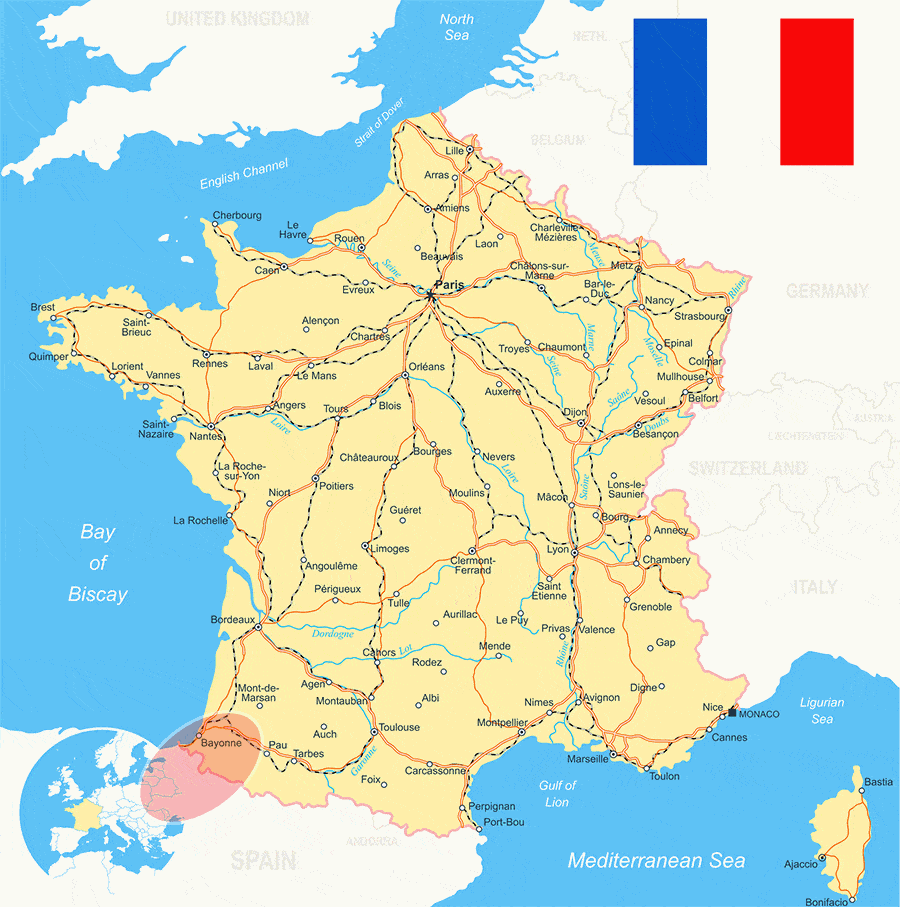
Located in southwest France, the Basque country is a small region that’s been home to the Basque people who have lived there for 5,000 years (fun fact: the Basque language is one of the oldest living languages). The region is famous for its unique culture, food, and architecture.
Why The Basque Country Is One Of The Best Places in France
While France’s Basque Country may not be one of the most-visited parts of France, it still offers a lot to explore and here are a few of the things that make it worth visiting.
- Biarritz: Once the ritzy vacation spot and seaside resort city for European nobility in the 1800s, Biarritz is now the laidback surfing capital of Europe thanks to its excellent waves and large sandy beaches.
- Bayonne: The official capital of the Basque Country, Bayonne is located along the Nive and Adour Rivers. It’s a cute town that feels more like a large village than a city. Bayonne is also famous for its chocolate, Bayonne ham, and bullfighting.
- Saint-Jean-de-Luz: This small beach town is known for its well-preserved city center and traditional Basque-style houses.
- Tiny Hilltop Towns and Villages: Accessible by car, the Basque country has multiple cute little villages nestled in the hilltops and mountains of the region. Some of the recommend towns to check out at Ainhoa, Sare, Espelette and La Bastide Clairence, and Saint-Jean-Pied-de-Port.
French Alps
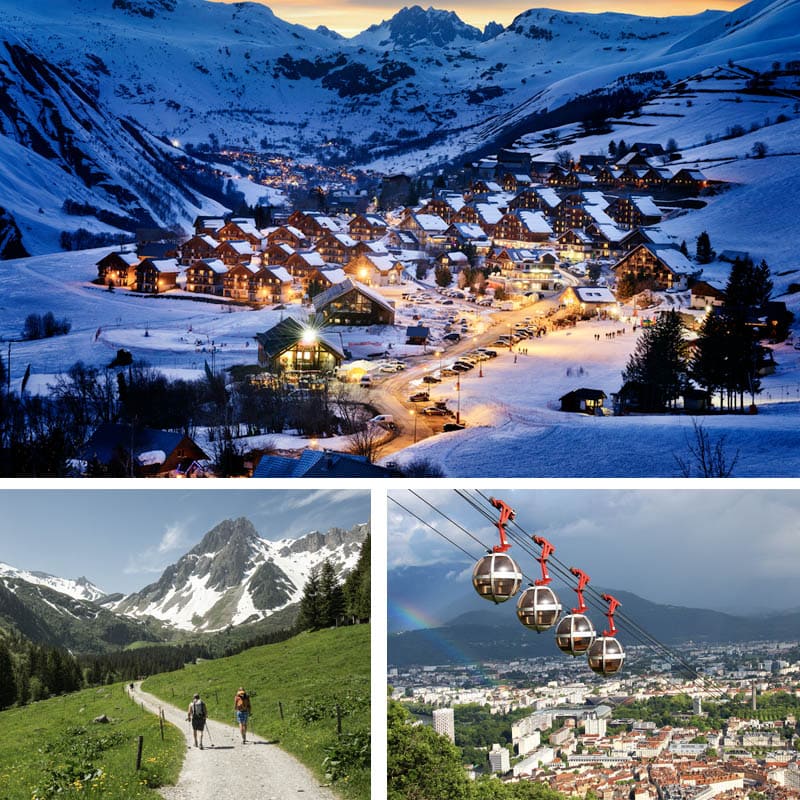
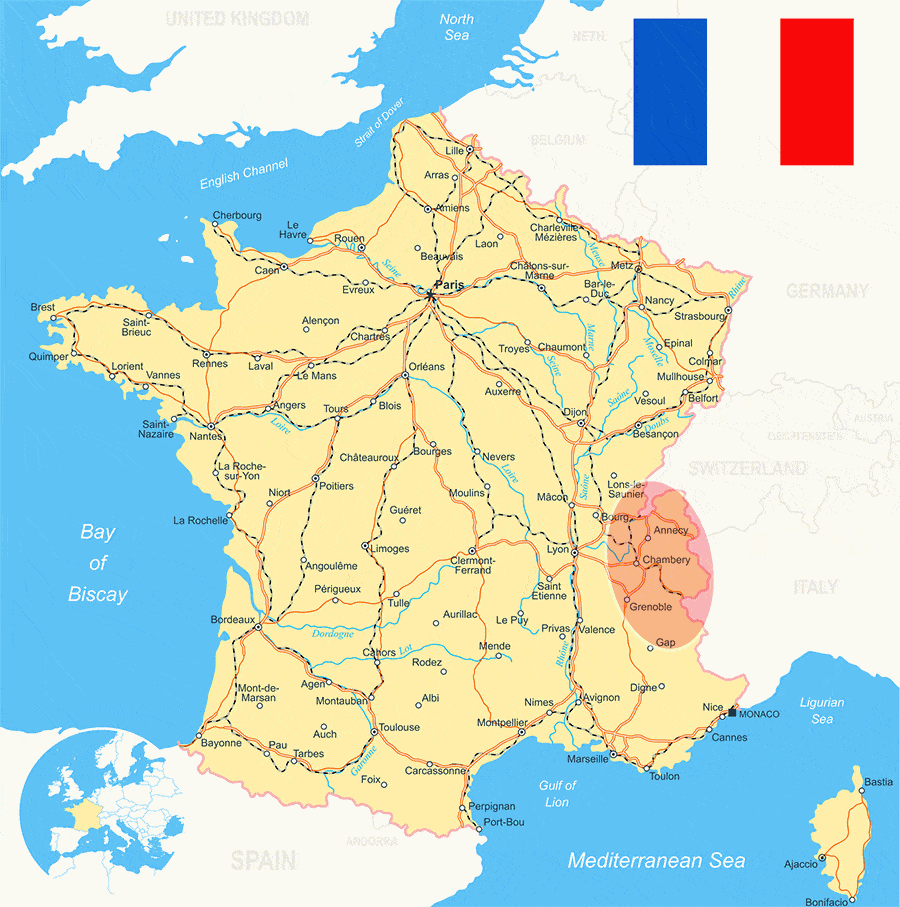
For outdoor enthusiasts, it’s hard to beat the French Alps for its excellent skiing & snowboarding in the winter and hiking, mountain biking, white water rafting, and paragliding in the summer. It’s also home to many famous resort towns — which means it’s a very expensive region of France.
Why The French Alps Is One Of The Best Places in France
It’s hard not to love the natural beauty of the Alps so let’s check out a few of the reasons why the French Alps are worth visiting:
- Outdoor Activities: If you’re into skiing, snowboarding, hiking, mountain biking, and other adventure sports then the French Alps are the place for you. In fact, it’s home to some of the best skiing in the world.
- Chamonix and Mont Blanc: The beautiful resort town of Chamonix sits at the base of the Mont Blanc (the tallest mountain in Europe) is home to some of the best skiing in the world so it’s one of the most popular outdoor destinations. Chamonix’s is an adventure seeker’s paradise.
- L’Aiguille du Midi: Aiguille du Midi is a 3,842-metre-tall mountain in the Mont Blanc mountain range. This popular tourist destination is easily accessible by cable car from Chamonix and gives visitors a great view of Mont Blanc.
- Annecy: Listed at one of the most beautiful cities in France, Annecy has a lovely medieval old city center and a gorgeous lake.
- St. Gervais: Another very popular ski resort that’s also famous for its natural hot springs.
- Grenoble: Grenoble is a lively student town that’s also home to many of France’s most innovative tech firms.

No Funny Business
The Savvy Backpacker is reader-supported. That means when you buy products/services through links on the site, I may earn an affiliate commission—it doesn’t cost you anything extra and it helps support the site.
Thanks For Reading! — James
Questions? Learn more about our Strict Advertising Policy and How To Support Us.
